2022 Mercedes-AMG SL 63 4Matic+ - US version
On this page you can see 40 high quality images of the "2022 Mercedes-AMG SL 63 4Matic+ - US version" from various angle for download.
Just click on any wallpapers to get the access to the full-size photo. All the pictures belong to their respective owners and are free for personal use merely.
2022 Mercedes-AMG SL 63 4Matic+ - US version
The new Mercedes-AMG SL, the new edition of an icon, returns to its roots with a classic soft top and sporty character. At the same time, the luxurious roadster as a 2+2 seater is particularly suitable for everyday use and puts its power down on the road with all-wheel drive for the first time. High-tech components such as AMG ACTIVE RIDE CONTROL suspension with active anti-roll stabilization, rear-axle steering, and optionally available AMG ceramic high-performance composite brake system are available. In combination with the Handcrafted AMG 4.0-liter V8 biturbo engine, this results in a driving experience of the highest order. As a consistent Performance Luxury model, Mercedes-AMG in Affalterbach has developed the SL completely independently. Two models with AMG V8 engines will kick off the market launch.
Almost 70 years ago, a sports car launched in Stuttgart immediately became a legend. The vision of expanding the potential of the Mercedes-Benz brand through motor racing successes produced the first SL as a result – a road-going racing sports car. Shortly after its debut in 1952, the 300 SL (internal designation W 194) reaped success after success on the race tracks of the world. In its first year, it achieved, among other things, a spectacular one-two victory in the legendary 24 Hours of Le Mans and even took the first four places in the Nürburgring Grand Jubilee Prize for sports cars. Its successes quickly make the SL a legend.
The successful racing car was followed in 1954 by the 300 SL production sports car (W 198), which is called the "Gullwing" because of its unusual doors. In 1999, a jury of motoring journalists voted it the "Sports Car of the Century." Other highlights of the model history include the "Pagoda" (W 113, 1963-1971), the evergreen R 107 (1971-1989), which was built for 18 years, and its successor, the R 129, which is considered an automotive sculpture because of its striking wedge shape. The abbreviation "SL" to this day thus stands for one of the few genuine automotive icons in the world.
In the decades-long development history from full-blooded racing car to open-top luxury sports car, the new Mercedes-AMG SL now sets another milestone. It combines the sportiness of the original SL with the unique luxury and technological excellence that characterize modern Mercedes models.
"The SL is an icon: For almost 70 years, the distinctive sports car has delighted Mercedes customers of every generation around the world. With the rebirth of the roadster from Mercedes-AMG, the new SL more than ever remains the symbol of this timeless fascination," says Britta Seeger, Member of the Board of Management of Daimler AG responsible for Mercedes-Benz Cars Marketing and Sales
"The new SL combines the sporty genes of the original SL with the driving performance typical of AMG. At the same time, it offers luxury and comfort at the absolute top level. This combination is unique in the sports car segment and is also reflected in the interior – where the highest levels of comfort and quality meet the right helping of sportiness. The high-quality combination of analogue world and state-of-the-art digital equipment makes it clear that the new SL is the rebirth of an icon for the modern era," says Philipp Schiemer, Chairman of the Board of Management of Mercedes-AMG GmbH
"With the new SL, we have created a repositioning of the iconic SL design. The expressively modelled exterior conveys a light and purist impression and brings sensual beauty and extravagant design into perfect harmony," says Gorden Wagener, Chief Design Officer Daimler Group
"We at Mercedes-AMG consider it a great honor to have had the privilege to develop the new edition of this sports car icon. When we were tasked with the overall development of the new SL, we were able to start from scratch without building on an existing structure. We are proud of the result, which once again demonstrates the high level of engineering expertise in Affalterbach. The new 2+2 concept combines agile driving dynamics with a high level of comfort and unrestricted suitability for everyday use," says Jochen Hermann, Chief Technical Officer of Mercedes-AMG GmbH
With its exciting design, state-of-the-art technology and outstanding driving characteristics, the new Mercedes-AMG SL sets standards in the luxury sports car segment. The exterior design fascinates with a perfect triad: it combines the modern Mercedes-Benz design philosophy of sensual purity with the sportiness typical of AMG and characteristic details. The two power bulges on the hood are just one of numerous features reminiscent of the first SL generation. The interplay of light and shadow makes the overall appearance visually light and low. It is clear at first glance that the new SL has returned to its sporty roots.
Exterior design: balanced design with sporty genes
Characteristic features of the body design are the long wheelbase, short overhangs, long hood, passenger compartment set back with a strongly raked windscreen and powerful rear end. This results in typical SL proportions. Together with the voluminously sculpted wheel arches and large alloy wheels flush with the outer skin, they give the roadster its powerful, dynamic appearance. When closed, the seamlessly integrated soft top underscores the purist, sporty impression.
The AMG-specific radiator grille emphasizes the effect of width of the front and, with its 14 vertical slats, cites the ancestor of all SL models, the legendary 300 SL racing sports car of 1952. Other distinctive design elements include slim, sharply outlined LED headlamps and equally slim LED rear lamps.
Interior design: Performance Luxury with "hyper analogue" cockpit
The interior of the new Mercedes-AMG SL transforms the tradition of the first 300 SL Roadster into the modern era. The new edition perfectly combines sporting virtues and luxury. Fine materials and meticulous workmanship underline the standard of the highest level of comfort. The cockpit design, right down to the adjustable central display in the center console, is focused on the driver. At the same time, the completely new interior space concept with 2+2 seats offers more room and functionality than before. The rear seats increase the daily practicality and usable space.
The minimalist interior of the 300 SL Roadster, equipped with high-quality materials, inspired the designers in the interior design of the new model: The result is an exciting combination of analogue geometry and digital world – called "hyper analogue." This is exemplified by the fully digital instrument cluster, which is integrated into a three-dimensional visor. The standard MBUX infotainment system offers a choice of several specific display styles and different modes.
One of many highlights in the interior of the new SL is the sculptural seat design of the standard, electrically adjustable AMG sports seats. The head restraints are integrated into the backrest and emphasize the sporty character. The AIRSCARF neck-level heating system is on board as standard: warm air flows into the passenger compartment from air outlets in the head restraints and wraps around the head and neck area of the driver and front passenger like a scarf. Perfect ergonomics and various progressive seam and quilting patterns complete the symbiosis of high-tech, performance and luxury. AMG Performance seats are available as an option.
The latest generation MBUX (Mercedes-Benz User Experience) is intuitive to operate and capable of learning. It offers numerous functional contents and the operating structure of the second-generation MBUX system, which debuted in the new Mercedes-Benz S-Class. In the SL, AMG-specific content is added extensively in five display styles. Exclusive menu items such as "AMG Performance" or "AMG TRACK PACE" also emphasize the sporty character.
Body shell: new roadster architecture with composite aluminum structure
The new SL is based on a completely new 2+2-seater vehicle architecture developed by Mercedes-AMG. The chassis is designed as a lightweight composite aluminum structure and consists of an aluminum space frame with a self-supporting structure. The design guarantees maximum rigidity and is thus the perfect basis for precise driving dynamics, high comfort, optimal packaging and sporty body proportions. The new body shell was created – as with the first SL in 1952 – literally on a blank sheet of paper: not a single component comes from the predecessor SL or any other model such as the AMG GT Roadster.
The aim of the body shell architecture is to realize the driving performance typical of AMG with a focus on lateral and longitudinal dynamics, while at the same time meeting the high standards of comfort and safety. In the new SL, the intelligent material mix enables the highest possible rigidity at a low weight. Optimized material cross-sections and sophisticated component shapes create space for the comprehensive comfort and safety features as well as the soft top. The materials used include aluminum, magnesium, fiber composites and steel, from which the windscreen frame, for example, is made. This serves as roll-over protection in conjunction with the roll bar system behind the rear seats, which can be extended at lightning speed when needed.
Compared to the previous model series, the torsional rigidity of the body shell structure increased by 18 percent. The transverse rigidity is 50 percent higher than the already outstanding value of the AMG GT Roadster. The longitudinal rigidity is 40 percent higher. The weight of the plain body shell is around 595 pounds (270 kilograms). Together with the low center of gravity, the targeted lightweight construction ensures outstanding driving dynamics.
Active aerodynamics: for perfect balance and high efficiency
A key development focus of the new SL was high aerodynamic efficiency-specifically a perfect balance between low drag and reduced lift. Here, the luxurious roadster benefits from Mercedes-AMG's wide-ranging motorsport expertise and from extensive active aerodynamic elements at the front and rear. All streamlining elements are seamlessly integrated into the exterior design. Further detailed measures reduce the drag coefficient to Cd 0.31 – an excellent figure for open-top sports cars.
The SL's aerodynamics meet the complex requirements of handling stability, drag, cooling and wind noise. Regardless of whether the top is down or up, the vehicle character and driving characteristics remain unchanged. The even aerobalance helps to defuse critical driving situations, such as a sudden evasive maneuver at high speed.
AIRPANEL air control system: two-piece for the first time
A technical highlight in the aero development: the two-piece, active air control system AIRPANEL. The first piece operates with vertical louvers hidden behind the lower air intake in the front bumper. The second piece is located behind the upper air intake and has horizontal louvers. Normally all louvers are closed. This position reduces drag and allows the air to be directed specifically towards the underbody. This further reduces front lift. Only when certain temperatures on predefined components are reached and the demand for cooling air is particularly high do the louvers open and allow maximum cooling air to flow to the heat exchangers.
Another active component is the retractable rear spoiler seamlessly integrated into the trunk lid. It changes its position depending on the driving status. In doing so, the control software takes into account numerous parameters: it factors the driving speed, the longitudinal and lateral acceleration and the steering speed into the calculation. The spoiler assumes five different angular positions from 50 mph (80 km/h) to either optimize handling stability or reduce drag.
The optional AMG Aerodynamics Package, which includes an active aerodynamic element, is hidden in the underbody in front of the engine, also contributes to the improved handling. This carbon profile, which weighs around 4.4 pounds (2 kilograms), reacts to the setting of the AMG driving modes and automatically extends downwards by around 1.6 inches (40 mm) at a speed of 50 mph (80 km/h). The AMG driving modes are then activated. This creates the Venturi effect, which sucks the car additionally to the road surface and reduces front-axle lift. The driver feels this positively in the steering: the SL can be steered even more precisely into bends and tracks even more stably.
A range of aerodynamically optimized alloy wheels with diameters of 20 or 21 inches is available for the SL, reducing drag through less turbulence. Particularly sophisticated are 20-inch wheels with plastic aero rings, which also save weight.
The soft top: less weight and low center of gravity
The sportier positioning of the new SL also suggested the decision for an electric soft top instead of the previous metal vario roof. The 46-lb. (21-kilogram) reduction in weight and the resulting lower center of gravity have a positive effect on driving dynamics and handling. The space- and weight-saving Z-fold makes it possible to dispense with a conventional soft-top compartment cover. The front roof cap ensures that the open soft top is flush with the surface in its final position. At the same time, the developers were faced with the task of maintaining the high suitability for everyday use and the exemplary noise comfort. The three-layer design consists of a tightly stretched outer shell, precisely crafted roof liner and the acoustic mat made of high-quality 450 g/m² material inserted in between.
Opening and closing takes only about 15 seconds and is possible up to a speed of 37 mph (60 km/h). The soft top is operated using the switch panel in the center console or the multimedia touchscreen, on which an animation shows how the process is progressing.
Engine, transmission and all-wheel drive: great variety and more choice than ever before
At market launch, the new SL starts with two output levels of the AMG 4.0-liter V8 biturbo engine. The engines are assembled purely by hand at the company's site in Affalterbach according to the "One Man, One Engine" principle. In the top model SL 63, the engine develops 577 hp and provides a maximum torque of 590 lb-ft over a wide rev range from 2,500 to 4,500 rpm. Accelerating from 0 to 60 mph takes an estimated 3.5 seconds. In the SL 55, the V8 unit develops an output of 469 hp and a peak torque of 516 lb-ft. The sprint from standstill to 60 mph takes an estimated 3.8 seconds.
For use in the SL, the engine received a new oil pan, repositioned intercoolers and active crankcase ventilation. The intake and exhaust ducts have been optimized for even more effective gas exchange, and the exhaust gas routing for the catalytic converter box and petrol particulate filter has been enlarged. The developers achieved the increased output of the SL 63 primarily through higher boost pressure and greater air flow, as well as modified engine software. To sum up, the eight-cylinder engine thrills with its exceptional power delivery and powerful acceleration in all engine speed ranges combined with maximum efficiency for low consumption and emission values.
Wet start-up clutch for the transmission
The AMG SPEEDSHIFT MCT 9G transmission combines an emotionally appealing gearshift experience with extremely short shift times and is specially adapted to the requirements of the new SL. A wet start-off clutch replaces the torque converter. It reduces weight and, thanks to its lower inertia, optimizes response to accelerator pedal commands, especially during spurts and load changes.
More traction and handling stability: fully variable AMG Performance 4MATIC+ all-wheel drive
For the first time in its almost 70-year history, the SL is available with a drive system acting on all four wheels. The two V8 models are equipped with AMG Performance 4MATIC+ all-wheel drive technology as standard.
This intelligent system combines the advantages of different drive concepts: the fully variable torque distribution to the front and rear axles ensures optimal traction right up to the physical limit. The driver is also able to rely on high handling stability and a high level of safety under all conditions.
Suspension and brakes: Multi-link front axle, active anti-roll stabilization and optimal deceleration The SL 55 is equipped as standard with a newly developed AMG RIDE CONTROL steel suspension with particularly capable aluminum shock absorbers and lightweight coil springs. For the first time, a series- production Mercedes-AMG vehicle is fitted with a multi-link front axle with five links arranged entirely within the wheel rim. This significantly improves the kinematics. At the rear axle, a 5-link design likewise controls the wheels.
The innovative AMG ACTIVE RIDE CONTROL suspension with active, hydraulic anti-roll stabilization makes its debut in the SL 63. The biggest innovation: active hydraulic elements replace the conventional mechanical anti-roll bars and compensate for rolling movements of the new SL in fractions of a second. The system enables optimal steering and load-change behavior with AMG-typical driving characteristics in terms of dynamics, precision and feedback for the driver. At the same time, it increases ride comfort when driving in a straight line and over bumps.
The newly developed AMG high-performance composite braking system guarantees excellent deceleration values and precise control. It impresses with short braking distances, sensitive response and high stability – even under extreme stress. The new composite brake discs are lighter than before and take up less space, which is used for even better brake cooling. The directional perforation is also new: In addition to the additional weight saving and better heat dissipation, this solution scores points with a faster response in wet conditions as well as better pad cleaning after braking maneuvers.
Active rear-axle steering: combines agility and stability
For the first time in its long history, the SL is equipped with active rear-axle steering as standard. Depending on the speed, the rear wheels steer either in the opposite direction (up to 62 mph, or 100 km/h) or in the same direction (faster than 62 mph, or 100 km/h) as the front wheels. The system thus enables both agile and stable handling – characteristics that are in contrast to each other without rear-axle steering. Other advantages include easier vehicle control at the limits and less steering effort because the front-wheel steering ratio is more direct.
Six driving modes and AMG DYNAMICS: from comfortable to dynamic
The six AMG DYNAMIC SELECT driving modes "Slippery," "Comfort," "Sport," "Sport +," "Individual" and "RACE" (standard for SL 63, included in the optional AMG DYNAMIC PLUS package for SL 55) enable a wide spread of vehicle characteristics from comfortable to dynamic. The individual driving modes offer an individual driving experience, precisely tailored to different driving conditions. As a feature of the AMG DYNAMIC SELECT driving modes, the SL models also feature AMG DYNAMICS. This integrated vehicle dynamics control extends the stabilizing functions of ESP® with agility-enhancing intervention in the all-wheel control, steering characteristics and additional ESP® functions. When cornering at speed, for example, brief braking intervention at the inner rear wheel generates a defined yawing motion around the vertical axis for responsive and precise entry into the bend. The spectrum ranges from extremely stable to highly dynamic.
SL range of equipment: great variety for an individual appearance
The equipment details and the numerous options offer a wide range of individualization for the most diverse customer wishes – from sporty-dynamic to luxurious-elegant. Twelve paint colors including the two exclusive SL paints Hyper Blue Metallic and MANUFAKTUR Monza Grey magno, three roof color variants and numerous new wheel designs make the choice a pleasure. Three exterior design packages are available to further sharpen the look and make it either more elegant or more dynamic. The SL 55 and SL 63 sit on 20-inch AMG 5-twin-spoke alloy wheels as standard. The range of wheels includes a total of six different variants. They include two aerodynamically optimized 20-inch options in 5-twin-spoke or multi-spoke designs. The range is rounded off with 21-inch AMG alloy wheels in a 10-spoke Y-design and 21-inch AMG forged wheels both in two color variants.
Driver assistance systems and MBUX: intelligent helpers in the background
With the help of numerous sensors, cameras and radar, the driver assistance systems observe the traffic and the surroundings of the new roadster. If necessary, the intelligent helpers can intervene at lightning speed. As in the current generations of the Mercedes C-Class and S-Class, the driver is supported by numerous new or enhanced systems – in everyday situations, for example, by assistance for speed adaptation, distance control, steering and lane changes. When danger threatens, the assistance systems are able to respond to impending collisions as the situation demands. The functioning of the systems is visualized by a new display concept in the instrument cluster.
The new assistance display in the instrument cluster shows comprehensibly and transparently how the driver assistance systems work in a full-screen view. The driver can see their car, lanes, lane markings and other road users such as cars, trucks and two-wheelers in an abstracted 3D way there. The system status and operation of the assistants are visualized in this depiction of the surroundings. The new animated assistance display is based on a 3-D scene generated in real time. This dynamic, high-quality representation makes the operation of the driving assistance systems transparent as a tangible augmented reality experience.
Numerous connectivity services available
The MBUX (Mercedes-Benz User Experience) infotainment system enables extensive intuitive operating options and many digital services from Mercedes me connect. Its strengths include the intuitive operating concept via touchscreen or touch control buttons on the steering wheel, smartphone integration of Apple CarPlay and Android Auto, hands-free system via Bluetooth connection, and HD radio. In conjunction with MBUX, customers already have access to connectivity services such as Live Traffic Information. With Mercedes me connect, however, the new SL becomes even more intelligent overall: additional functions can be used before and after the journey or while on the road. All that is required is to link the roadster to a Mercedes me account in the Mercedes me portal and accept the terms of use. Thanks to navigation with Live Traffic Information and Car-to-X communication, the customer drives with real-time traffic data. This way, traffic jams can be avoided efficiently and valuable time can be saved. Car-to-X communication enables connected vehicles to exchange information about traffic events.
The new Mercedes-AMG SL: the exterior design
The new SL combines the best of both worlds in its exterior design: the Mercedes-Benz design philosophy of sensual purity, combined with the sporty genes of AMG. Characteristic details such as the power bulges on the hood respectfully cite the long SL tradition. The balanced design simultaneously offers more function and space in the interior than before. The interplay of light and shadow makes the overall appearance visually light. Every detail conveys value and exclusivity. The muscular proportions signal at first glance that the new SL has returned to its sporty roots.
"SL" – an abbreviation standing for "Super" and "Light" – quickly became a legend due to the motorsport successes of the Mercedes-Benz 300 SL, which was unveiled in 1952. From 1954, the 300 SL series sports car (W 198) with its distinctive Gullwing doors, derived from the racing car, significantly increased its appeal further. Other highlights of the model history: the "Pagoda" (W 113, 1963-1971), the evergreen R 107 (1971-1989), which was built for 18 years, or its successor, the R 129, which is regarded as an automotive sculpture with its striking wedge shape. In the decades-long development history from full-blooded racing car to open-top luxury sports car, the new Mercedes-AMG SL now sets another milestone. It combines the sportiness of the original SL with the unique luxury and technological excellence that characterize modern Mercedes models.
The enlarged dimensional concept with 2+2 seats offered the designers more freedom in their design possibilities. The long wheelbase, short overhangs and steeply raked windscreen with black-painted frame make the SL look compact and low. Hallmark SL proportions such as the long hood and the passenger compartment set far back signal the appearance of a luxurious sports car that is also very suitable for everyday use. Surfaces shaped by airflow, right down to the recessed door handles, transport the unique spirit of the iconic SL into the future. When closed, the high-quality soft top underlines the light, purist impression. The voluminously sculpted wheel arches and the alloy wheels flush with the outer skin emphasize power and sportiness.
Front view: unmistakably SL, unmistakably Mercedes-AMG
The AMG-specific radiator grille characterizes the powerful, wide front end. With its contour that widens at the bottom and its 14 vertical slats, it cites the ancestor of all SL models, the globally successful 300 SL racing sports car from 1952. In recent years, this radiator grille has become the most striking and distinguishing feature of all new AMG models. In the new SL, it has a pronounced three-dimensional design and is positioned particularly low. This reinforces the dynamic impression.
The lower air intake gives the front section additional visual width. The front bumper is characterized by the so-called "jet wing:" the large outer air intakes extend far towards the center of the car and channel the airflow to the radiators with three vertical fins. Side air deflectors in high-gloss black allow air to flow around the vehicle in a targeted manner. The wide front splitter in silver chrome literally hovers just above the road as an additional aero element. The long and flat hood underlines the distinct AMG sports car genes. The two power bulges are further unmistakable citations of SL history.
Extremely slim, sharply outlined LED headlamps give the new SL added presence. Precise graphics in the darkened interior of the headlamps emphasize the depth. The daytime running light signet with two bright light spots makes the SL unmistakable from a distance.
Side view: seamless, clear and solid surfaces
In the side view, the strongly pronounced vehicle shoulder in combination with the AMG alloy wheels lends a perfect balance of elegance and sportiness. The waisted side also emphasizes the vehicle's power – especially through the strongly flared rear wheel arches. The precise detail design of the fender trim provides an accentuating contrast to the clear and solid surfaces, which remain seamless thanks to the recessed door handles.
The SL 55 and 63 Roadsters are fitted as standard with 9.5 J x 20 (front) and 11.0 J x 20 (rear) alloy wheels with 265/40 R 20 (front) and 295/35 R 20 (rear) tires. Numerous other designs 20 to 21 inches in diameter are optionally available. The 20-inch AMG alloy wheels also feature aero elements which enhance the roadster's Cd values and thus also improve consumption.
Rear view: low and powerful with integrated, active spoiler
The soft top in a so-called Z-fold enables designing a low and powerful rear end. The active rear spoiler is integrated almost seamlessly into the trunk lid. In combination with the wide track, the strong rounding of the rear end emphasizes the width of the roadster. The narrow LED taillamps define the rear view in an even more accentuated way. The design of the rear lamps takes up the shape of the headlamps. A bar signet and luminous dots stage the light unmistakably by day and by night.
Other characteristic design elements at the rear include the high-gloss black underbody diffuser with four vertical fins and integrated, newly designed twin tailpipe trim. At the same time, suitability for everyday use is not neglected: Thanks to the standard-fit Parking Package with Surround-View camera, the driver maintains situational awareness even in confusing circumstances.
The new Mercedes-AMG SL: the interior design
The interior of the new SL transforms the tradition of the first 300 SL Roadster into the modern era. With its Mercedes-AMG performance genes, the new edition serves the sporty target group as well as customers who are focused on maximum comfort. Fine materials, meticulous workmanship and attention to detail further underscore the high standard of luxury in the interior. The cockpit design, right up to the electrically adjustable central display in the center console, is focused on the driver and captivates with a harmonious overall impression. The completely redesigned dimensional concept with 2+2 seats offers more function and space in the interior at the same time. The MBUX infotainment system offers a choice of several specific display styles and different modes.
The first 300 SL Roadster is one of the most famous automotive icons. Its minimalist and high-quality interior inspired the designers in creating the interior for the new Mercedes-AMG SL. For the new edition of the icon, they created a mix of analogue geometry and digital world – called "hyper analogue." A good example of this is the fully digital instrument cluster, which is integrated into a three- dimensional visor.
"The interior of the new Mercedes-AMG SL pampers driver and passengers with sophisticated luxury. The new SL combines the highest levels of comfort and quality in its interior, coupled with just the right amount of sportiness. The high-quality combination of analogue world and state-of-the-art digital equipment makes it clear: the new SL is the rebirth of an icon for the modern era," says Philipp Schiemer, Chairman of the Board of Management at Mercedes-AMG GmbH.
"The SL is the icon of our brand: for decades, this roadster has stood for automotive fascination and desirability. This is a great opportunity and challenge for the design, because every designer wants to create icons," says Gorden Wagener, Chief Design Officer Daimler Group. "The result is a revolutionary experience in the interior as a combination of digital and analogue luxury. We have created the most iconic SL ever, the luxury icon of the 2020s".
The new, highly sophisticated dimensional concept once again allows a 2+2 seating configuration for the first time since 1989 (Mercedes SL model series R 129). This makes the new SL even more versatile with increased space and usability in the rear seats. . If the extra seating is not needed, a removable wind deflector behind the rear seats can protect front-seat passengers from draughts on the back of their necks. Or the second row of seats can be used as additional storage space and accommodate a golf bag, for example.
Aviation-inspired instrument panel
The symmetrical instrument panel is designed as a sculptural, powerful wing and structured into an upper and lower section. Highlights include the four newly developed, galvanized turbine nozzles. Their surfaces merge into the instrument panel in the form of powerful power domes. The lower section of the instrument panel evolves fluidly from the center console, seamlessly connecting the two elements.
Despite symmetry, the cockpit design creates a clear focus on the driver: the high-resolution 12.3-inch LCD screen of the instrument cluster is not designed to be free-standing, but integrated into a high-tech visor. This prevents reflections caused by sunlight.
Center console with adjustable touchscreen
The center console dominates the separation between driver and front passenger. Of maximum width and rising sharply towards the front, it flows into the lower section of the instrument panel. The functional and visual heart of the center console is the metallic panel that penetrates the leather surfaces at the front and rear. With the NACA air intake signature, it carries on the genes of the AMG GT and GT 4-Door Coupe. This design element thus becomes a typical AMG style element in the interior.
The NACA air intake transitions almost seamlessly into the 11.9-inch portrait-format multimedia touchscreen. To avoid disturbing light reflections caused by different sun positions when the soft top is open, the touchscreen can be electrically adjusted in its inclination from 12 degrees to 32 degrees. Its portrait format offers clear advantages, especially for navigation, as well as more leeway in terms of ergonomics. The touchscreen floats between the two central, high-quality air vents, which elegantly cite the history of the SL, as a digital contrast to emotive design elements.
The door panels are integrated into the balance of the interior
Similar to the center console, the surfaces in the doors also develop fluidly from the instrument panel. The result is a gradient accentuated with decorative topstitching that frames the entire interior and runs past the turbine nozzles at the sides. The door center panel is designed as a sensual layered topography. The pull handle is also designed in the same way as the center console and is another eye- catching feature. The materiality and modelling of the surfaces are repeated in the doors, creating balance in the interior. High-quality Burmester loudspeaker covers in real metal, whose perforation pattern also stands out visually, are integrated into the doors.
Sculptural seat design with integrated headrests
The avant-garde, sculptural seat design of the standard, electrically adjustable AMG sports seats plays skillfully with layers and wrapping surfaces. This makes the seats appear lighter and less voluminous. The headrests are integrated into the backrest and thus contribute to the sporty proportions of the seat. Perfect ergonomics and various progressive seam and quilting patterns complete the symbiosis of high-tech, performance and luxury.
AMG performance seats optional
Even the standard sports seats offer a high level of lateral support in addition to excellent comfort. The optional AMG Performance seats with integrated head restraints are even sportier still. The AMG Performance seat can be further, optionally, enhanced with additional bolster adjustability and the ability to automatically tighten in the Sport, Sport+ and RACE driving modes to ensure optimal lateral support at all times.
The large selection of different upholsteries also reflects the range from comfortable to performance- oriented features. Customers can choose from single or two-tone Nappa leather, particularly elegant Nappa STYLE leather with diamond quilting, or the sporty combination of Nappa leather with Microfiber and contrasting topstitching in yellow or red. Inflatable air cushions and three massage programs in the multi-contour seats for driver and front passenger ensure outstanding long-distance comfort.
AIRSCARF neck-level heating comes as standard: warm air flows into the passenger compartment from air outlets in the head restraints and wraps around the head and neck area of the driver and front passenger like a scarf. The temperature of the seat heating for driver and front passenger can be controlled separately for seat surfaces and seat backrests. In addition, a three-stage seat ventilation system is standard.
AMG Performance steering wheel in twin-spoke design
The AMG Performance steering wheel with its seamlessly integrated buttons also offers tangible and visible added value. The three rounded twin spokes combine strength with lightness. The steering wheel rim, which is flat at the bottom and covered in Nappa leather or Nappa leather/Microfiber, can be heated as an option. Also included is a sensor mat with "hands-on" detection. If the driver does not have their hands on the steering wheel for a certain time, a warning cascade is started, which finally activates Emergency Brake Assist if the driver remains inactive.
Visual and technical highlights include the buttons, which are seamlessly integrated into the surfaces of the horizontal double spokes. Haptic sensing aids in the area of the symbols make control easier. The left sensor surface of the upper steering wheel spokes controls the instrument cluster, while the right sensor surface controls the media display. The lower spokes contain the controls for the cruise control/DISTRONIC (left) and telephone/hands-free system/volume control (right).
The two round, standard AMG DRIVE UNIT steering wheel buttons impress with intuitive operation, brilliant, color LCD displays and modern icons. This allows important driving functions and the driving modes to be controlled without having to take your hands off the steering wheel. They work by turning (the setting ring) or pressing (on the display button) as is widely known. The selected setting is shown on the display, which is directly integrated in the respective button. The AMG SPEEDSHIFT MCT 9G transmission can also be shifted precisely and quickly manually via the aluminum paddle shifters located on the left and right behind the steering wheel rim.
Intuitively operated and capable of learning: the latest-generation MBUX (Mercedes-Benz User Experience)
Some functional contents and the operating structure of the second-generation MBUX system correspond to those of the S-Class. They have been extensively supplemented or replaced by AMG- specific content and views. The five display styles Classic, Sport, Supersport, TRACK PACE and Discreet are available. The AMG-specific Supersport style offers the option of displaying various contents, for example current engine data, temperature data of various vehicle components, current vehicle settings as well as an audio/media menu. In addition, the other display styles were also adapted to the AMG requirements. This makes the new SL highly distinct in terms of communication and information.
Exclusive menu items such as "AMG Performance" or "AMG TRACK PACE" emphasize the sporty character. In addition, there is the configuration of various driving parameters such as manual transmission shifting, vehicle sound, chassis settings, ESP® or active rear spoiler.
In the AMG Performance menu, the driver can call up a wide range of data at the touch of a finger on different tiles, from power, torque or lateral acceleration to the power distribution of all-wheel drive and the current vehicle status with tire pressure and fluid temperatures. The attention to detail goes so far that even the wheel angles on the front and rear axles or the oil pressure in the active anti-roll stabilization system can be read out.
The interior has become even more digital and intelligent, as hardware and software have been extensively enhanced. Brilliant images on the LCD screens make it easy to control vehicle and comfort functions. The driver's and central displays offer an aesthetically pleasing and holistically coordinated experience. The appearance of the instrument cluster can also be personalized with different display styles and individually selectable main views.
Using the capacitive display button on the control bar below the central display, the driver selects various functions such as media volume, assistance systems, vehicle functions or the appropriate driving mode from "Comfort" to "RACE."
The head-up display (optional on SL 55, standard on SL 63) contributes to relaxed driving, as the driver does not need to take their eyes off the road. It displays relevant cues and actions three-dimensionally in the real driving situation and surroundings. Here, too, there is a choice of several style variants.
Depending on the equipment or personal taste, the ambient light frames the exclusive interior in 64 different colors. The "Discreet" display style is coupled to the ambient light. A total of seven background colors are available here, each of which is assigned to one of the 64 colors. Among them are two exclusive AMG background colors.
AMG TRACK PACE: Data logger for use on the race track
AMG TRACK PACE, the virtual race engineer, is on board as standard for the SL 63 and optionally available for the SL 55: The software is part of the MBUX infotainment system and records more than 80 vehicle-specific data (for example speed, acceleration, steering angle, brake pedal actuation) ten times per second while driving on a race track. On the "Telemetry" screen, 40 parameters can be displayed live, of which up to four – individually selected by the driver – can be displayed simultaneously.
This is complemented by the display of lap and sector times on the multimedia display, head-up display and in the instrument cluster, as well as additional training and analysis tools. Selected race tracks such as the Nürburgring or Spa-Francorchamps are already stored, and it is also possible to record your own tracks. The race navigation in the head-up display shows cornering angles and braking points to help you find the racing line. The augmented reality function of MBUX also allows the racing line of a saved recording to be displayed on the multimedia display. In this way, the driver can improve their lap times as if with a virtual instructor. Acceleration and deceleration values can also be measured and stored.
With the Dash Cam option (not available in all markets), videos can also be recorded on a USB storage device using the HD camera integrated in the vehicle. Various data can be integrated into the recording as an overlay, for example lap and sector times, a mini-map of the track and vehicle-specific data such as speed, acceleration, steering angle or brake pedal actuation.
The new Mercedes-AMG SL: the body shell
It began in 1952 with a filigree space frame, which in the first SL combined low weight with the highest possible torsional rigidity. This construction was conceived for its original use in motorsport and further developed to provide the backbone for the later production model in coupe and roadster form. The latest new edition of the roadster icon is based on a completely new vehicle architecture developed by Mercedes-AMG. The lightweight composite aluminum chassis offers the highest rigidity and the basis for precise driving dynamics, high comfort, optimal packaging and sporty body proportions.
The new roadster architecture consists of an aluminum space frame combined with a self-supporting structure. As with the first SL in 1952, it was literally created on a blank sheet of paper: not a single component was adopted from the predecessor SL or any other model such as the AMG GT Roadster.
"Our development team in the body shell area was faced with an extremely appealing, but also challenging task: when we were tasked to do the overall development of the new SL, we were able to start from scratch, so to speak, without building on an existing structure. We can be justifiably proud of the result and it proves once again the high level of engineering expertise in Affalterbach. Because on the one hand, we have managed to meet the high package demands. On the other hand, we were able to achieve excellent rigidity values with a favorable weight in all areas, thus laying the foundation for agile driving dynamics, high comfort and maximum safety," says Jochen Hermann, Chief Technical Officer of Mercedes-AMG GmbH.
The demands on the body shell architecture of the new SL were high: the specifications demanded a much more comprehensive performance scope than for the predecessor model series. In particular, the basic layout with 2+2 seats and the alignment with a large variety of drives presented the developers with completely new challenges in terms of complexity. The aim was to represent the driving performance typical of the Mercedes-AMG brand as well as to meet the high standards on comfort and safety of a Mercedes-Benz.
Intelligent material composition with high aluminum content and new fiber composites
The intelligent material mix of aluminum, steel, magnesium and fiber composites enables the highest possible rigidity at a low weight. Optimized material cross-sections and sophisticated component designs create space for the required comfort and safety features, the sophisticated technology and the soft top. Other targeted measures include aluminum thrust panels on the underbody and function- integrated struts at the front and rear. The instrument carrier made of magnesium and the cover bridge made of a fiber composite material with a mixture of glass fibers and carbon also demonstrate the engineers' striving for the best possible mix of materials. This also applies to the windscreen frame made of high-strength, hot-formed tubular steel. This serves as roll-over protection in conjunction with a roll bar system behind the rear seats that can be extended at lightning speed when needed.
Cast components with tailor-made wall thicknesses
Cast aluminum components are used at the nodal points where forces come together or where functions are highly integrated, for example where large forces have to be transferred. Cast components have the advantage of enabling the specific discharge of forces, and make it possible to vary wall thicknesses locally according to the loads encountered. This makes it possible to realize higher rigidities that are required at certain points, for example at the chassis mounts. In addition, only the required wall thickness is implemented at each point of the component. This saves weight in less stressed areas.
Compared to the previous model series, the torsional stiffness of the body shell structure has increased by 18 percent. The transverse rigidity, for example, is 50 percent higher than the excellent value of the AMG GT Roadster, while the longitudinal rigidity is 40 percent higher. The likewise improved introduction rigidity for the chassis mounts guarantees very precise handling and high agility. The weight of the plain body shell without doors, hood and hood lid is around 595 pounds (270 kilograms).
The entire vehicle concept is designed to keep the center of gravity as low as possible. This applies both to the low connection of the drivetrain and axles and to the arrangement of the rigidity-relevant components in the body shell structure. Examples of this are the connections between the front and rear sections and the passenger safety cell, with their high flexural strength and torque rigidity, systematically realized via force paths that are as low as possible.
Quality and processing at the highest level
Modern joining methods such as MIG welding, laser welding, punch riveting, blind riveting, MIG soldering, bonded seams or flow-drilling screws and, of course, high-precision toolmaking raise the body shell quality to top level. This applies equally to gap dimensions and to radii or joint runs. It goes without saying that the new Mercedes-AMG body shell architecture meets all internal crash requirements, which are significantly stricter than legal requirements in many areas.
Despite the high quality standard, the chassis development was implemented in the shortest possible time thanks to maximum efficiency: it took less than three years from the time a team of initially just six people was tasked with the job to the approval for series production. The high quality of the software used in the digital development made it possible to give the go-ahead for the production of the series- production tools without a real chassis prototype. And the so-called structural validation vehicle, which is of immense importance for passive accident safety, already met the demanding internal requirements during the first real crash test.
The new SL is manufactured at the Bremen site, where its predecessor already rolled off the production line.
The new Mercedes-AMG SL: the soft top
The sporty positioning of the new SL also suggested the decision for an electric soft top instead of the previous metal vario-roof. The 46-pound (21-kilogram) reduction in weight and the resulting lower center of gravity have a positive effect on driving dynamics and handling. At the same time, the developers were faced with the task of maintaining the high suitability for everyday use and the exemplary noise comfort.
This is achieved by a three-layer design with a tightly stretched outer shell, a precisely crafted roof liner and the acoustic mat inserted in between. It is made of high-quality material and offers a high level of noise comfort.
The space- and weight-saving Z-fold makes it possible to dispense with a conventional soft-top compartment cover. The front roof cap ensures that the open soft top is flush with the surface in its final position. Two fully automatic linkage exit flaps to the right and left then close the gaps to the body. Each time they open and close, they perform an impressive ballet of movement. The entire process takes only about 15 seconds and is possible up to a speed of 37 mph (60 km/h). The soft top is operated using the switch panel in the center console or the multimedia touchscreen, on which an animation shows the progress of the soft top operation.
The roof spans over a weight-optimized steel-aluminum construction and contributes to the vehicle's low center of gravity with its low weight. Two integrated, round aluminum cross beams serve as additional reinforcements. The outer cover is available in black, grey or red. For a good view to the rear, the rear window made of safety glass can be heated.
Variable fabric soft top compartment
Another innovation is the fabric soft top compartment. It is significantly lighter and more compact than, for example, a fixed sheet metal compartment and thus allows for a larger luggage compartment. Two golf bags fit perfectly in the 7.5-cu-ft. (213-liter) trunk. The automatic residual luggage compartment partition, which is included in the optional Load Compartment Package, is particularly convenient. When the roof is closed, it slides up: this increases the load compartment volume to around 8.5 cu-ft. (240 liters) compared to the standard partition.
Thanks to HANDS-FREE ACCESS, the trunk lid can be opened and closed fully automatically with a kicking motion of the foot below the bumper. The optional Load Compartment Package maximizes flexibility and makes everyday life easier. For example, a variable loading floor, practical stowage nets in the boot, rear and passenger footwell, a folding box for shopping and a 12-volt socket are among the components.
The new Mercedes-AMG SL: engine, transmission and all-wheel drive
At market launch, the new roadster starts with two output levels of the Handcrafted AMG 4.0-liter V8 biturbo engine. And for the first time in its history, the SL also transfers the power to the road with all- wheel drive.
In the top model SL 63, the engine develops 577 hp and provides a maximum torque of 590 lb-ft over a wide rev range from 2,500 to 4,500 rpm. The roadster's top engine thus conveys effortless superiority in every rev range. The acceleration from 0 to 60 mph in an estimated 3.5 seconds illustrates this. In the Mercedes-AMG SL 55, the V8 engine delivers 469 hp and a peak torque of 516 lb-ft. The sprint from standstill to 60 mph takes 3.8 seconds.
The further developed AMG 4.0-liter V8 engine still operates with biturbo charging, in which the two turbochargers are not located on the outside of the cylinder banks, but in between them in the cylinder-V. The advantages of the "hot inside V": a compact engine design, spontaneous response of the turbochargers and low exhaust emissions thanks to optimal airflow to the close-coupled catalysts.
To further improve response, turbochargers with twin-scroll technology are used. Here, the housing of the turbocharger is divided into two parallel flow channels. Combined with two separate exhaust ducts in the exhaust manifold, this makes it possible to control the exhaust gases on the turbine wheel separately. One duct is fed by the exhaust gases of the first and second cylinders of a cylinder bank, the other by the exhaust gases of the third and fourth cylinders. The aim is to prevent the individual cylinders from having mutually adverse effects on the gas cycle. This reduces the exhaust gas back-pressure and improves the gas exchange. The results are increased output owing to improved cylinder charging with fresh mixture, more torque at low revs and immediate response times.
Engine features also include weight-optimized pistons, an adapted air intake and intercooling system, as well as extensive software developments. The jet-guided direct petrol injection with piezo injectors, all-aluminum crankcase, 4-valve technology with camshaft adjustment, air-to-water intercoolers, alternator management, ECO start/stop function and gliding mode have been retained.
Special modifications for use in the SL
For use in the SL, the internally named M 177 engine received a new oil pan, repositioned intercoolers and active crankcase ventilation. The intake and exhaust ducts have been optimized for even more effective gas exchange and the exhaust gas routing for the catalytic converter box and petrol particulate filter has been enlarged. The developers achieved the increased output of the SL 63 primarily through higher boost pressure and greater air flow, as well as modified engine software. To sum up, the eight-cylinder engine thrills with its exceptional power delivery and powerful acceleration in all engine speed ranges combined with maximum efficiency for low consumption and emission values.
In the SL 63, the eight-cylinder engine features active engine mounts. The SL 55 can be optionally equipped with this as part of the AMG DYNAMIC PLUS Package. The mounts solve the conflicting goals of achieving as soft a connection as possible to the powertrain for high comfort and as rigid a connection as possible for optimum driving dynamics, by steplessly and quickly adapting their rigidity to the respective driving conditions. These are liquid-filled rubber mounts. The vehicle sensors detect the respective driving situation as well as the resulting vibration behavior of the engine and pass this information on to a control unit. It regulates the force with which the engine is coupled to the body and thus optimizes the handling. For this purpose, a magnetic damper fluid is pressed through an annular gap of a coil in the mount. Differently high currents generate a magnetic force that regulates the flow and thus the engine mounts according to the information from the control unit.
Three cooling circuits for optimal thermal management
To ensure that the new Mercedes-AMG SL doesn't get too hot even when it's being pushed to the limit on race tracks, three cooling circuits are used to maintain an even temperature. The high-temperature circuit cools the Handcrafted AMG 4.0-liter V8 biturbo engine and the two exhaust gas turbochargers. It also supplies the heating heat exchanger for on-demand and comfortable temperature control of the interior. The mechanical water pump is positioned on the engine block to save space and is driven reliably and directly by the timing assembly, with a pinion on the camshaft meshing with the water pump gear. The pump circulates a total of 12.3 liters of coolant at up to four bar pressure and 400 liters per minute.
The three-tier main cooling module (high-temperature radiator, low-temperature radiator and condenser), flange-mounted intake fan and auxiliary intake radiator (for the high-temperature circuit) – which is installed "horizontally" for a low center of gravity, among other things – are positioned centrally in front of the engine behind the large radiator shroud. This means that they can be optimally supplied with a large volume of air. Thermal management is influenced not only by the three-stage thermostat and shut-off valve (when the engine is cold, the cooling circuit is stopped so that the engine comes up to operating temperature more quickly), but also by active aerodynamic elements such as the two AIRPANELS in front of the main cooling module or the active aerodynamic element in the front underbody.
With a volume of 7.2 liters, the low-temperature circuit is somewhat smaller. It serves the intercoolers, the AMG SPEEDSHIFT MCT 9G transmission and the engine control unit. The performance of the main radiator is supported by an auxiliary radiator in the left wheel arch. Indirect air-to-water intercooling has enabled the developers to ensure efficient charge air cooling for high performance even in difficult ambient conditions. The plastic air intake box is designed to allow maximal equal distribution of air across the pipes – with minimum pressure loss. The dimensioning of the charge air cooling components allows the charge air temperature to be kept at precisely defined values above the ambient temperature.
The third cooling circuit is responsible for the engine oil. The oil-to-water heat exchanger ("oil cooler") in the right wheel arch enables rapid heating of the oil. This has a positive effect on the service life of the engine and reduces consumption after a cold start. In addition, this circuit prevents the engine from overheating and thus being damaged. The external oil cooler is controlled by its own oil thermostat. The oil and water pipes are made of aluminum instead of steel, which helps to reduce weight.
Digital and smart assembly by hand: "One Man, One Engine"
The engine is assembled purely by hand. In the AMG engine factory at the Affalterbach site, the "One Man, One Engine" principle is combined with Industry 4.0 manufacturing methods. This is designed according to modern knowledge of ergonomics, flow of goods, quality assurance, sustainability and efficiency. Smart production is characterized by maximum flexibility, is transparent and highly efficient. It assures and improves the quality of the engines and production processes using digital technologies.
Short shift times, high efficiency: the AMG SPEEDSHIFT MCT 9G transmission
The AMG SPEEDSHIFT MCT 9G transmission (MCT = Multi-Clutch Transmission) is specially adapted to the requirements of the new SL. A wet start-off clutch replaces the torque converter. It reduces weight and, thanks to its lower inertia, optimizes response to accelerator pedal commands, especially during spurts and load changes. The elaborately calibrated software ensures extremely short shift times and, if required, fast multiple downshifts and, thanks to the throttle blip function in the "Sport" and "Sport+" driving modes, delivers a particularly emotionally appealing gearshift experience. Here, defined ignition adjustments enable even faster gearshifts than in the other modes. In all modes moving off occurs in first gear in order to always guarantee a dynamic driving experience. There is also the RACE START function which ensures optimal acceleration from a standstill.
The highlights of the transmission include:
- Adaptation of the shift characteristics to the selected AMG DYNAMIC SELECT driving mode
- In manual mode "M," the transmission responds immediately and precisely to manual gearshift commands from the driver and implements the commands at lightning speed
- The temporary "M" mode allows an immediate change to manual mode "M" – merely by using the paddle shifters
- Automatic throttle blipping function when downshifting: This effect is automatically active in the "Sport", "Sport+" and "RACE" driving modes (standard on the SL 63)
- ECO start/stop function is automatically active in the "Comfort" driving mode
- The "gliding" mode can be activated in the "Individual" driving mode
Fully variable AMG Performance 4MATIC+ all-wheel drive
For the first time in its almost 70-year history, the SL is available with a drive system acting on all four wheels. The two V8 models are equipped with AMG Performance 4MATIC+ fully variable all-wheel drive as standard. This intelligent system combines the advantages of different drive concepts: the fully variable torque distribution to the front and rear axles ensures optimal traction right up to the physical limit. The driver is also able to rely on high handling stability and a high level of safety under all conditions: in the dry, in the wet or in snow. The transition from rear-wheel to all-wheel drive and vice versa takes place continuously on the basis of a sophisticated matrix that integrates the intelligent control into the entire vehicle systems architecture.
An electromechanically controlled clutch connects the permanently driven rear axle variably to the front axle. The best possible torque split is continuously computed according to the driving conditions and driver's input. This means that the new roadster can be driven continuously variably from traction-oriented all-wheel drive to pure rear-wheel drive. Alongside traction and lateral dynamics, the all-wheel drive also improves the longitudinal dynamics for even more powerful acceleration.
Performance hybrids with exclusive AMG concept
At a later date, Mercedes-AMG will also offer the SL with a powerful Performance hybrid drive. The AMG E PERFORMANCE drive strategy is based on the guiding principle of offering an electrified powertrain that further enhances driving dynamics while also being highly efficient. With the increase in performance due to the additional electric motor, the development team was also able to improve the efficiency of the entire vehicle in parallel – and achieve lower emissions as well as lower consumption.
The new Mercedes-AMG SL: the suspension
The SL 55 is equipped as standard with a newly developed AMG RIDE CONTROL steel suspension with particularly light and capable aluminum shock absorbers including adjustable damping and lightweight coil springs. For the first time, a series-production Mercedes-AMG vehicle is fitted with a multi-link front axle with five links arranged entirely within the wheel rim which significantly improves the kinematics. The independent wheel control and wheel suspension elements enable high lateral acceleration values with minimal drive influences on the steering system. At the rear axle, a 5-link design likewise controls the wheels. The SL 63 also celebrates the premiere of the innovative AMG ACTIVE RIDE CONTROL suspension with active, hydraulic anti-roll stabilization.
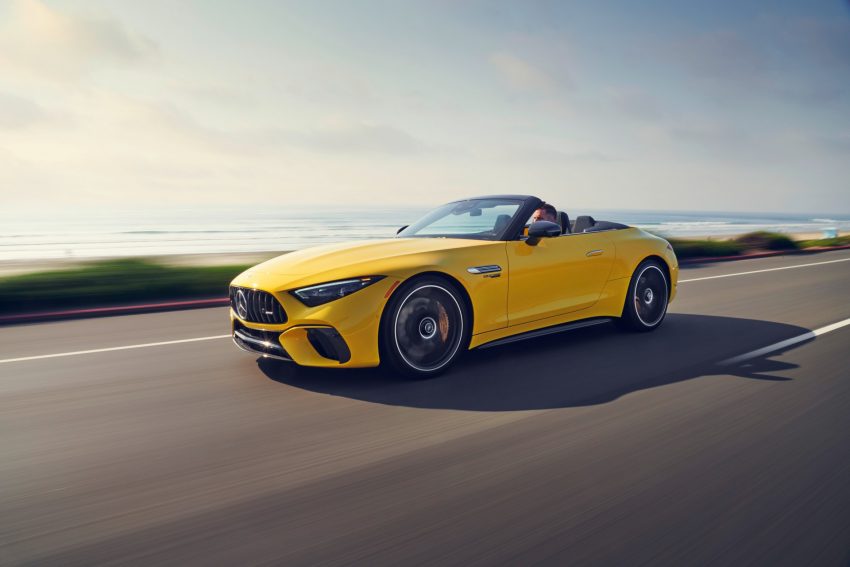
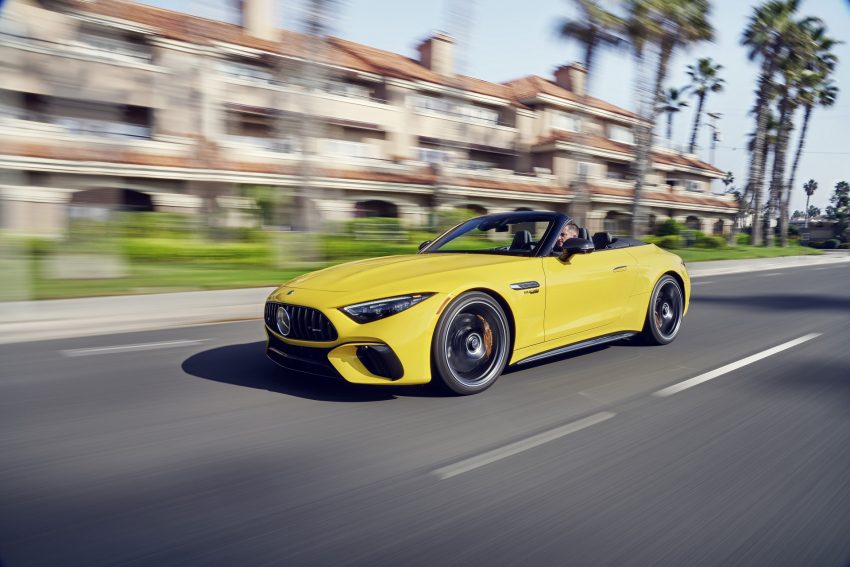
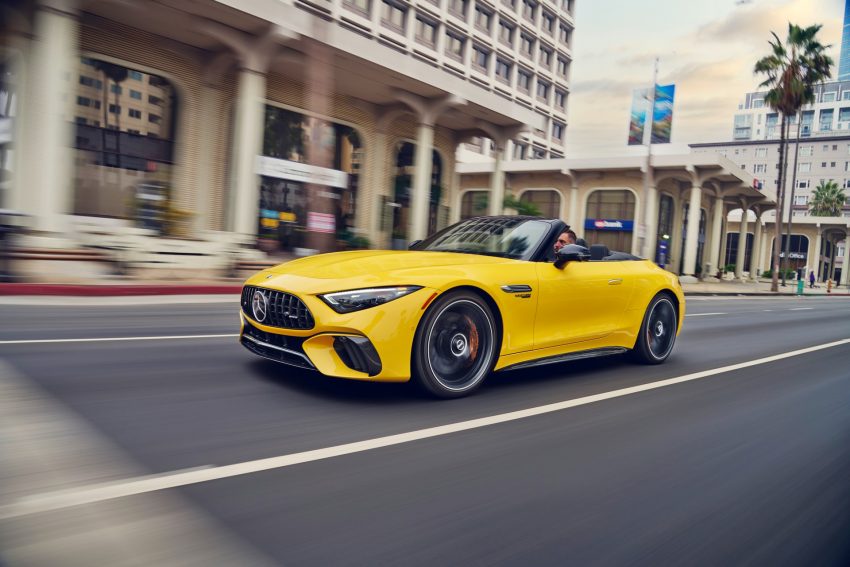
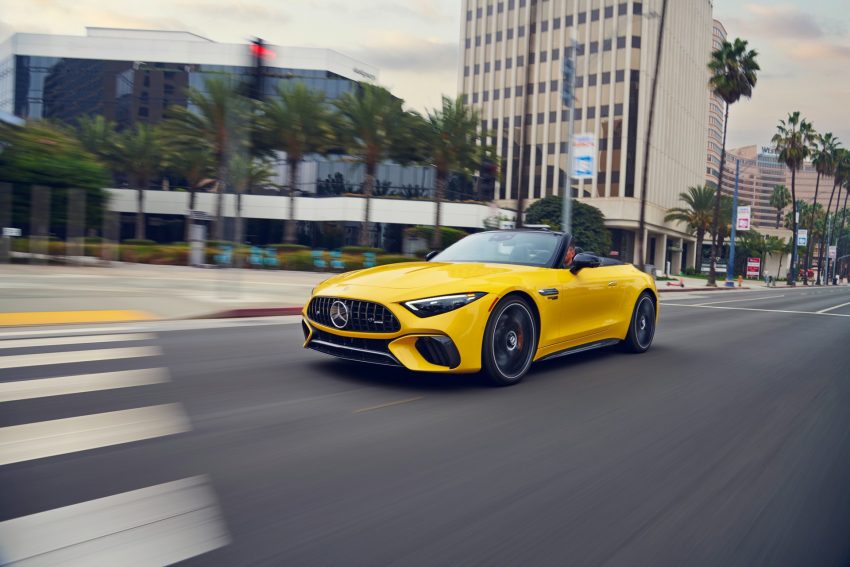
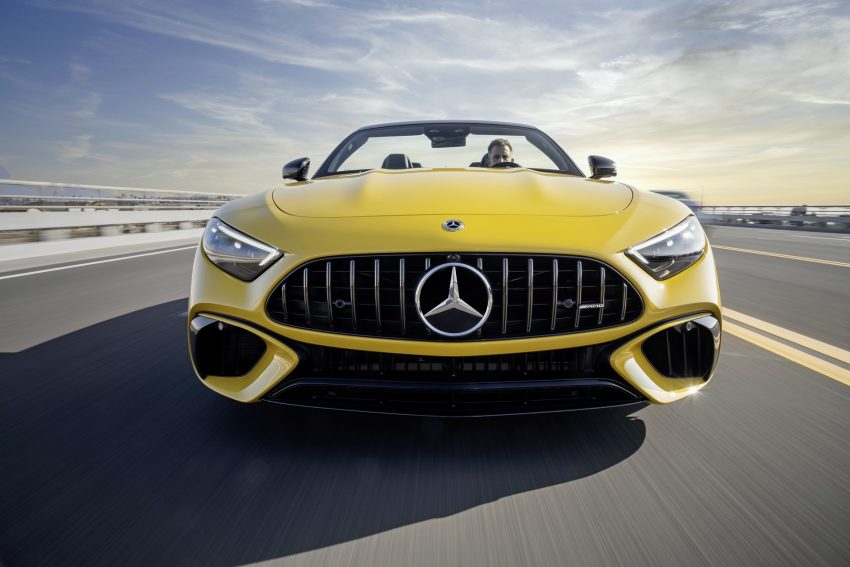
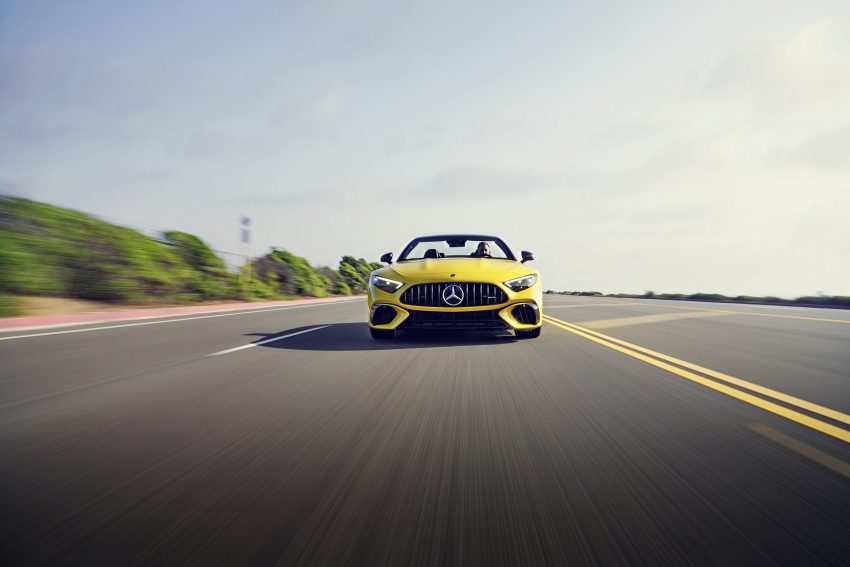
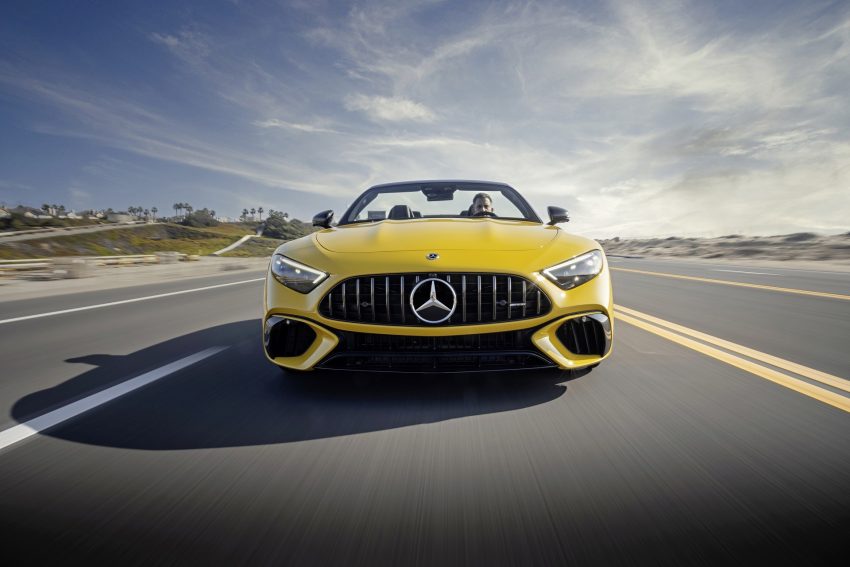
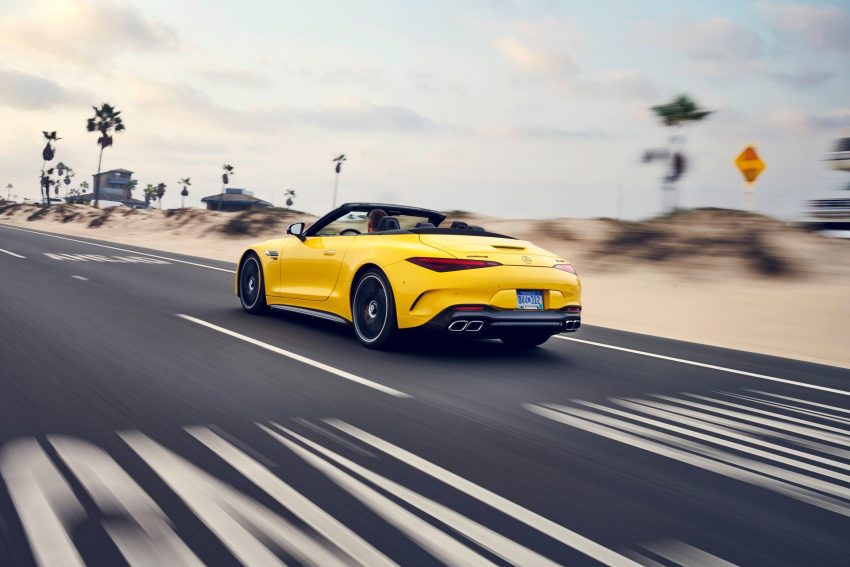
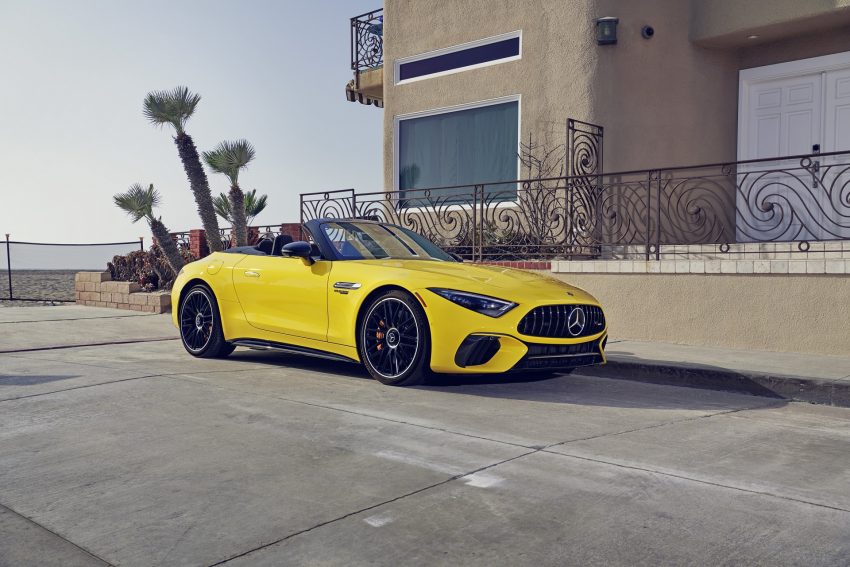
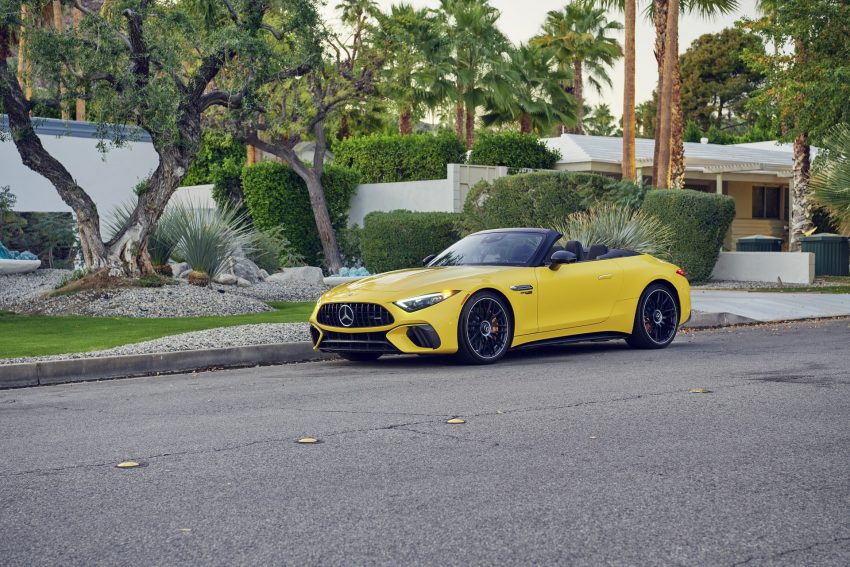
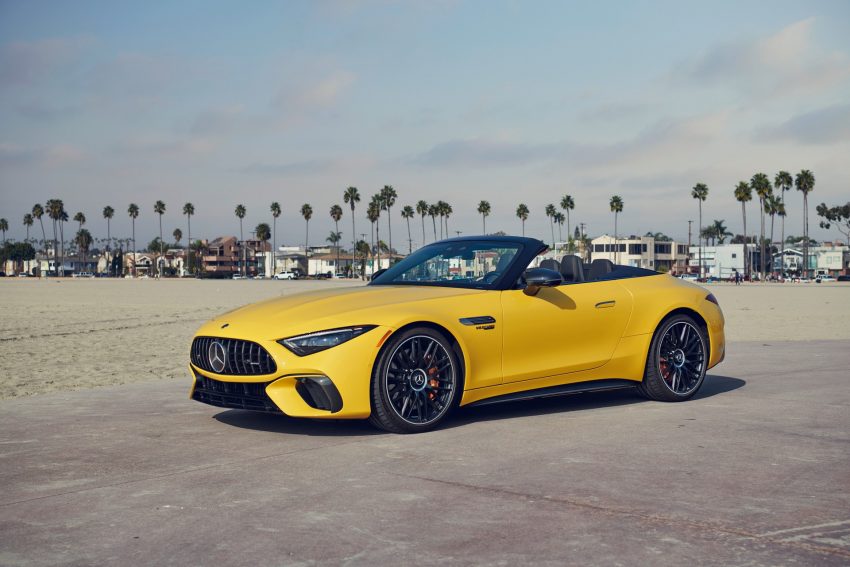
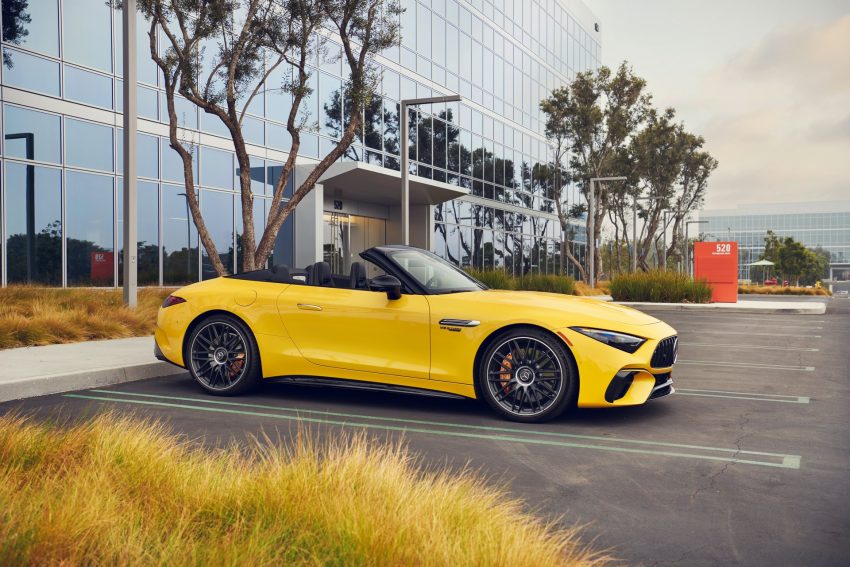
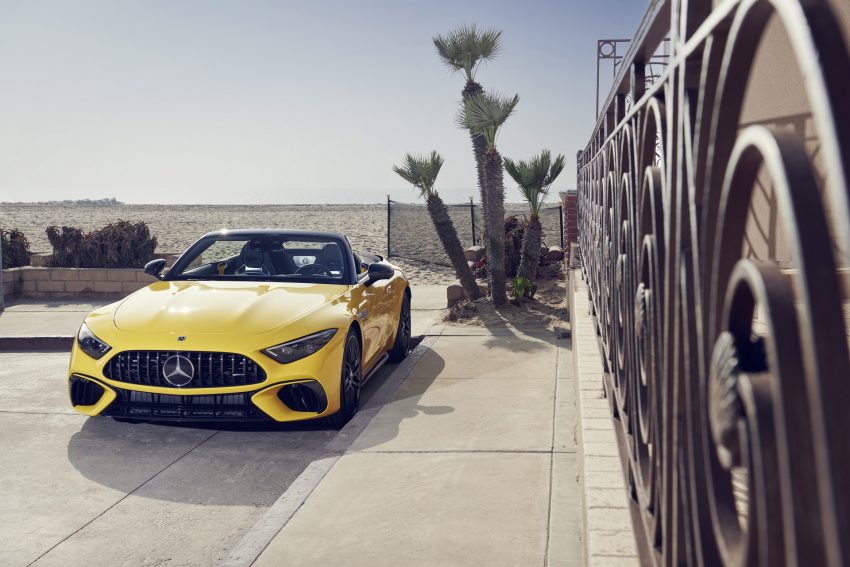
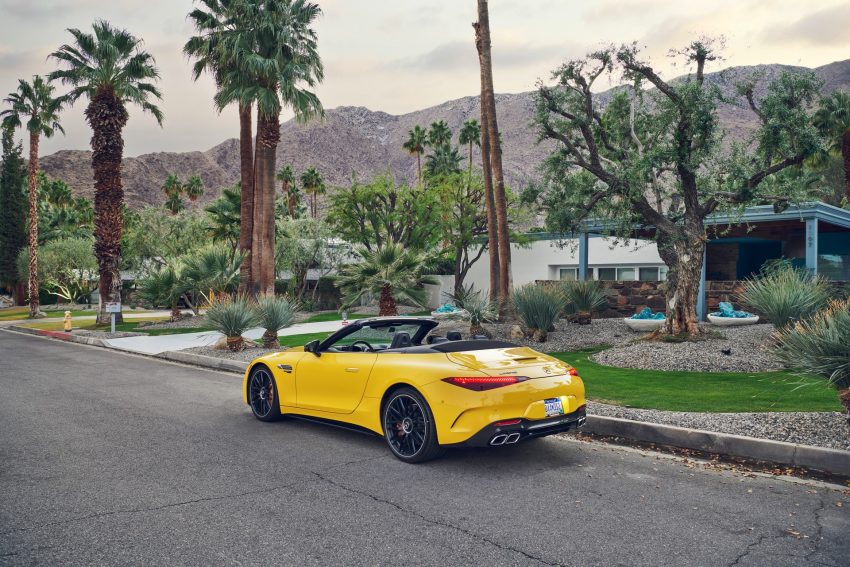
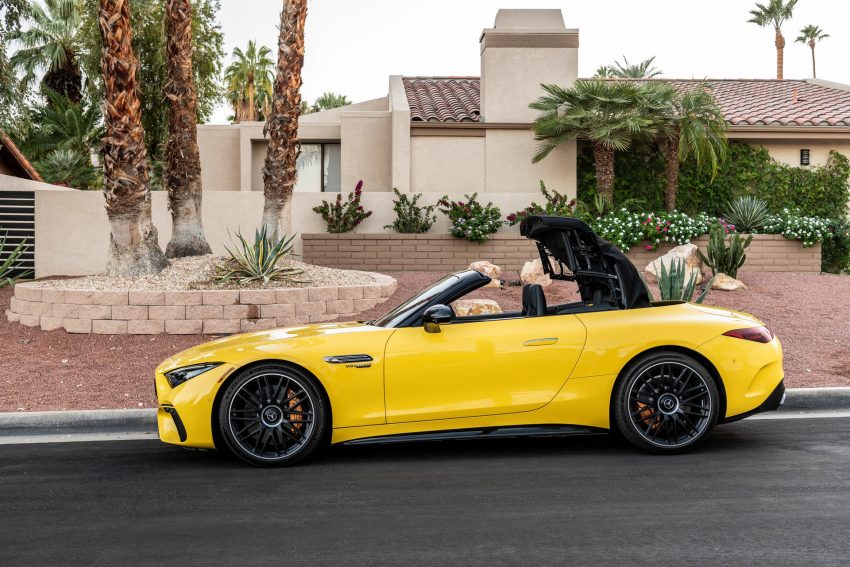
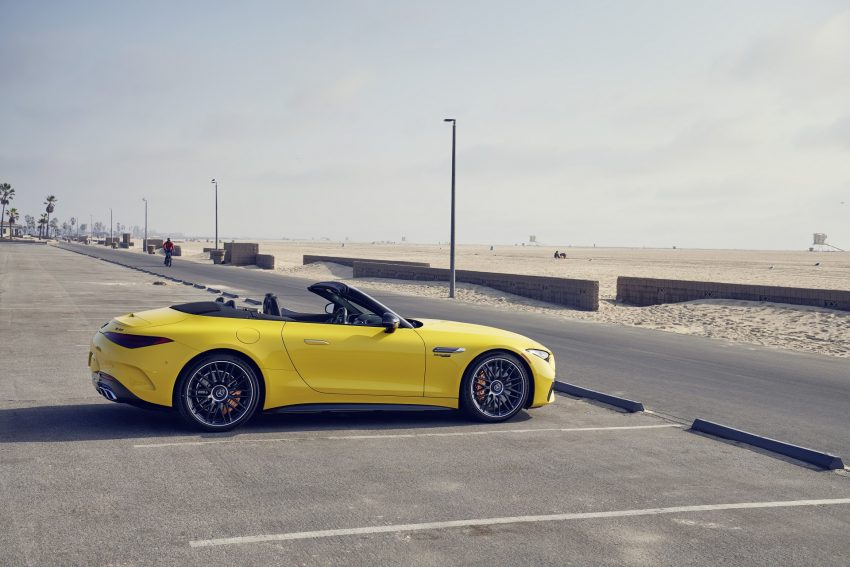
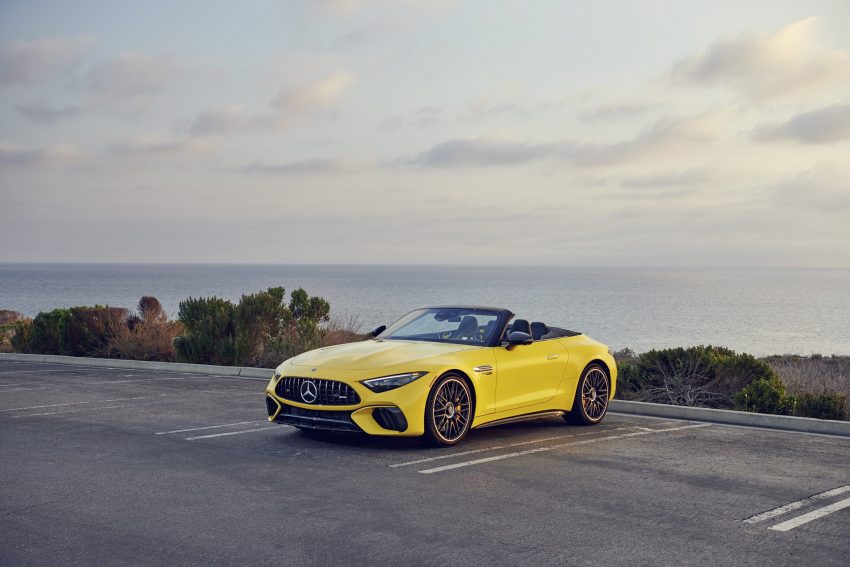
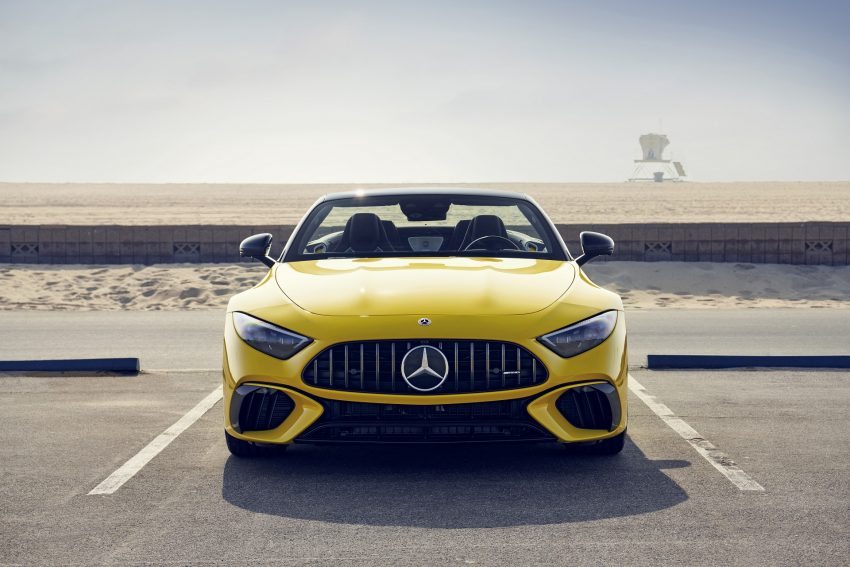
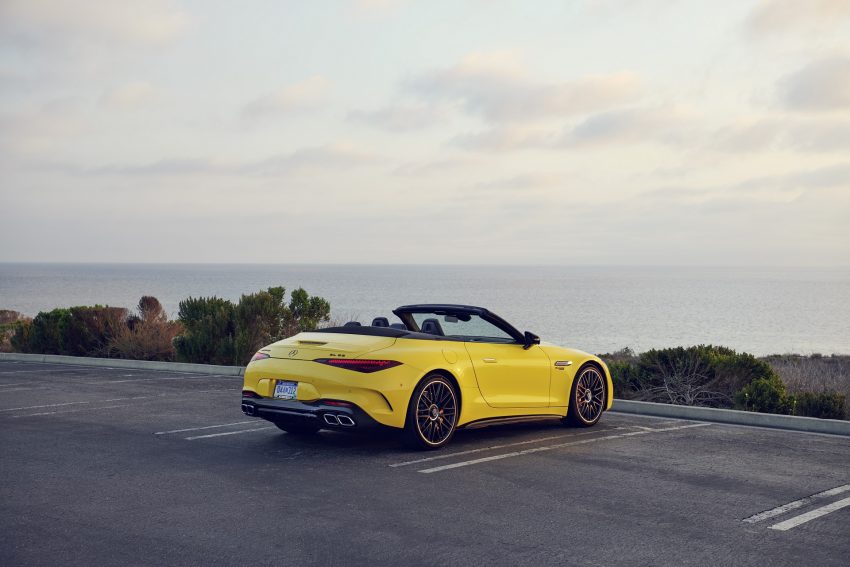
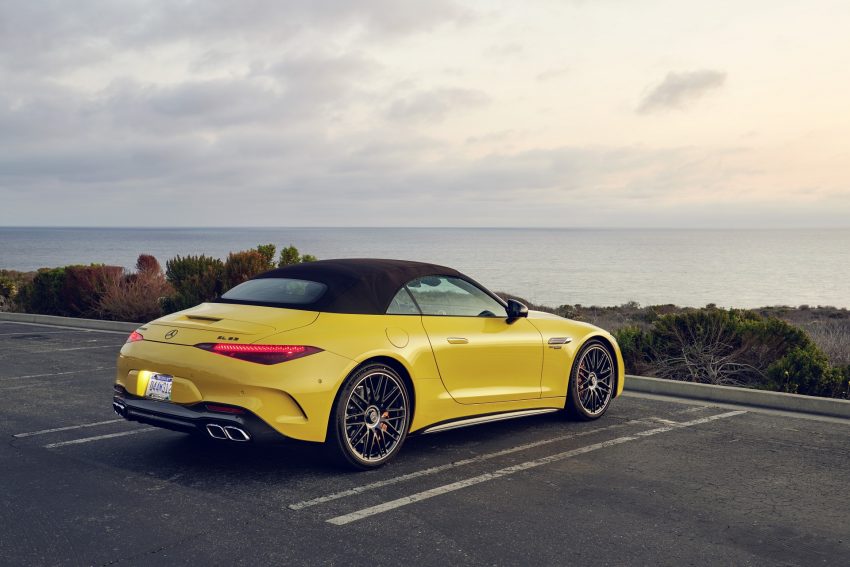
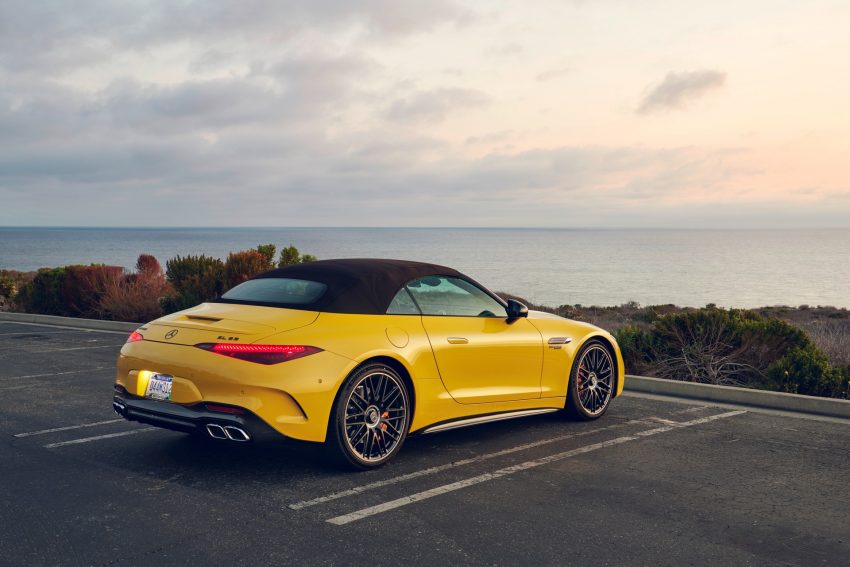
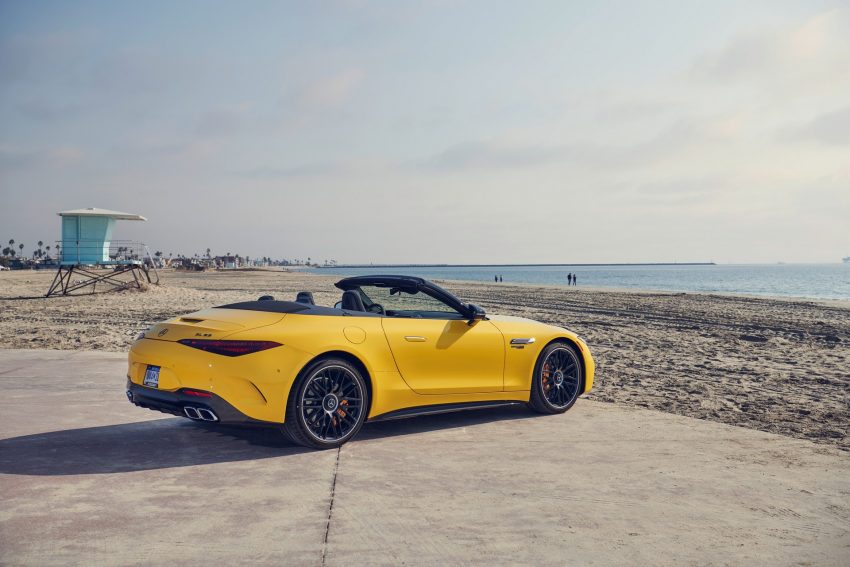
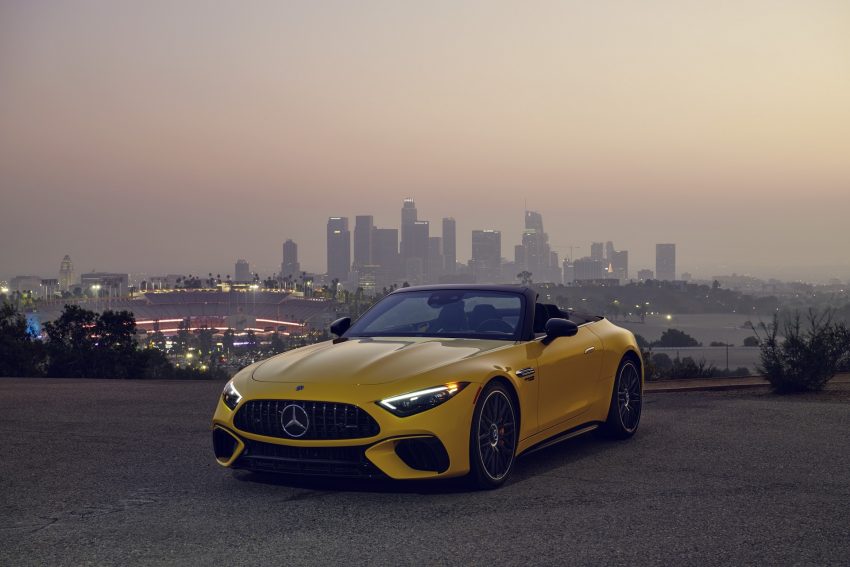
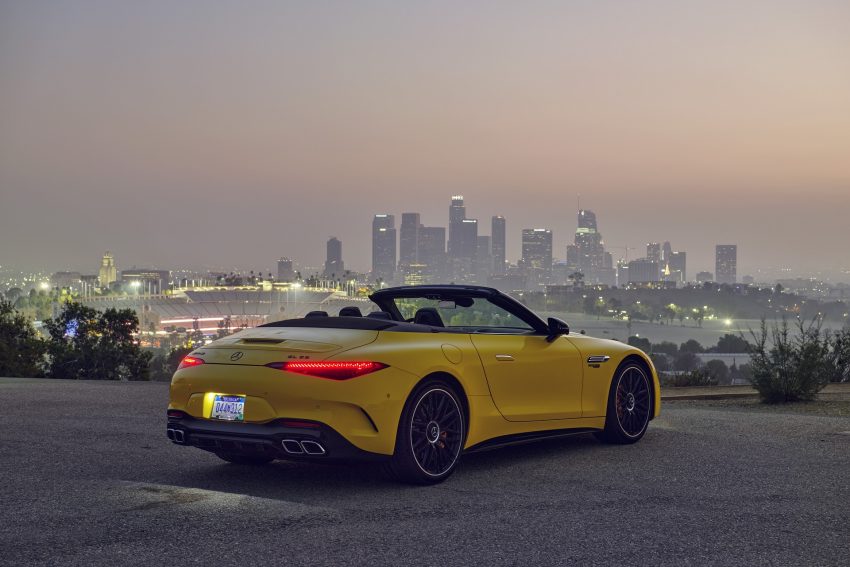
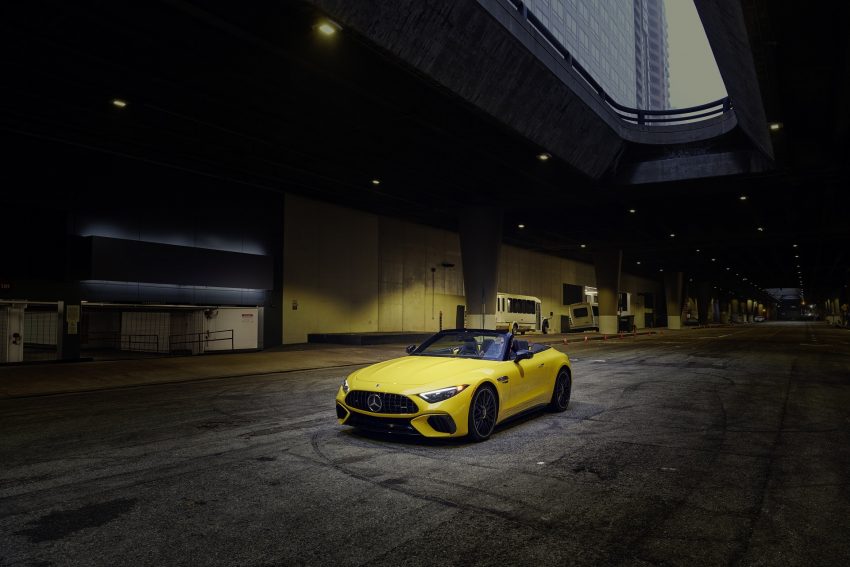
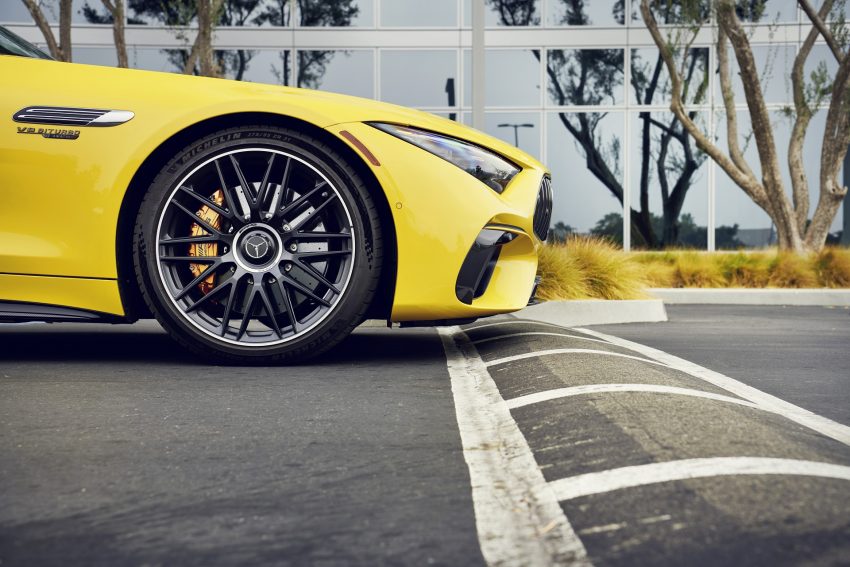
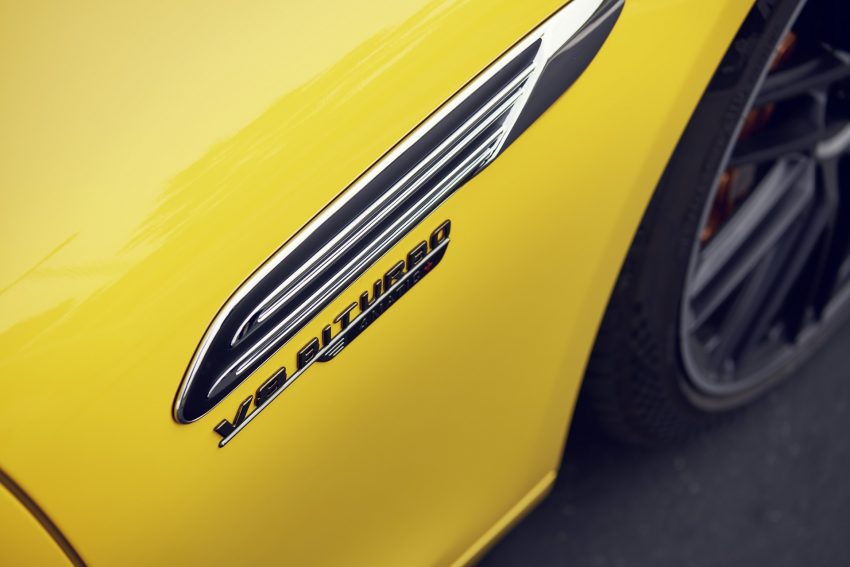
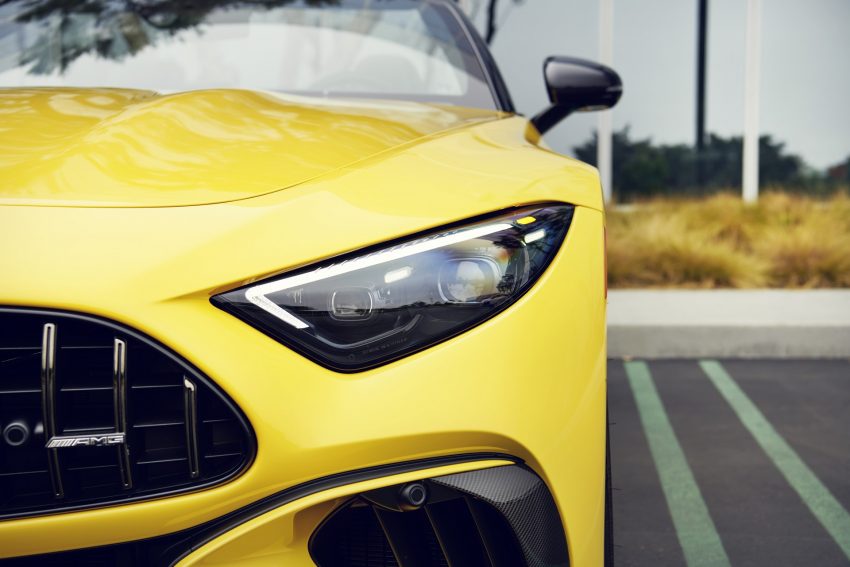
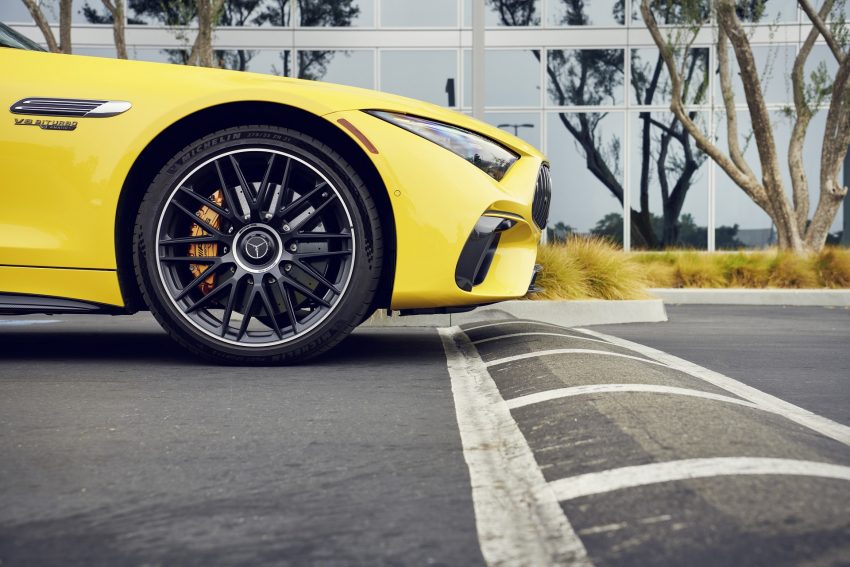
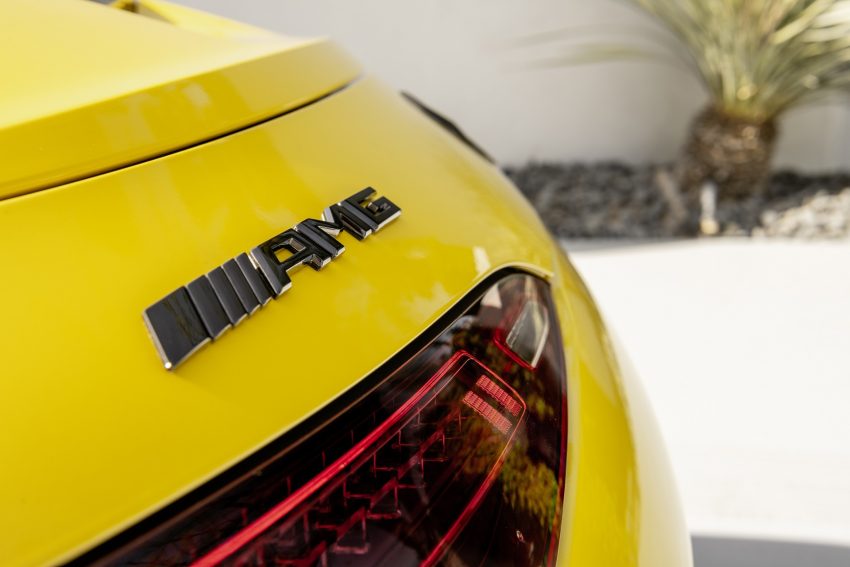
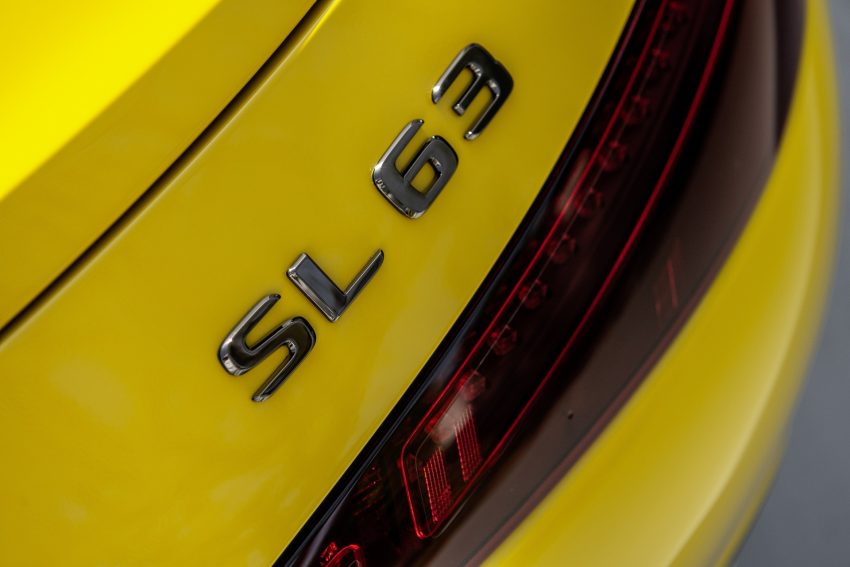
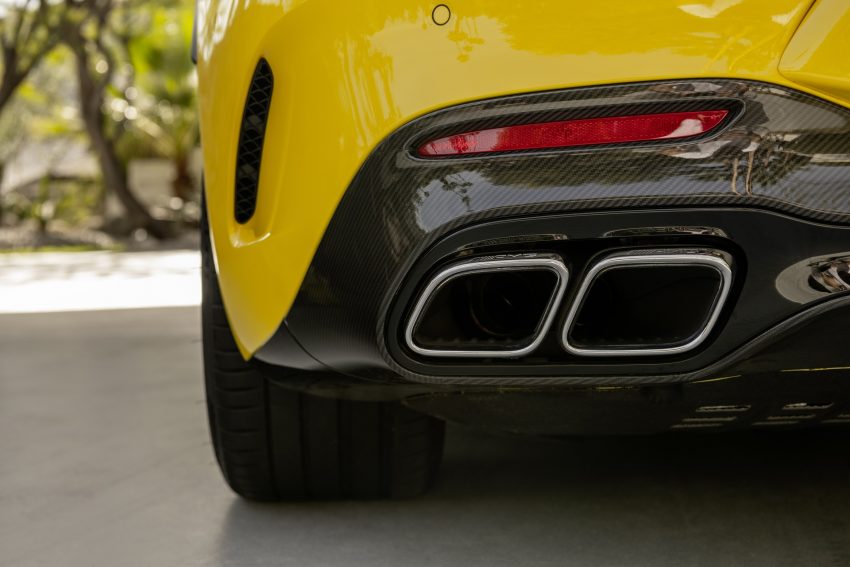
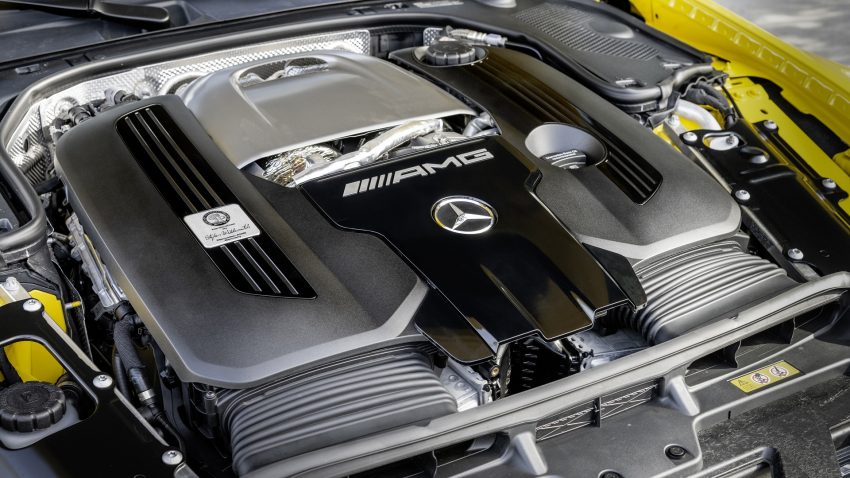
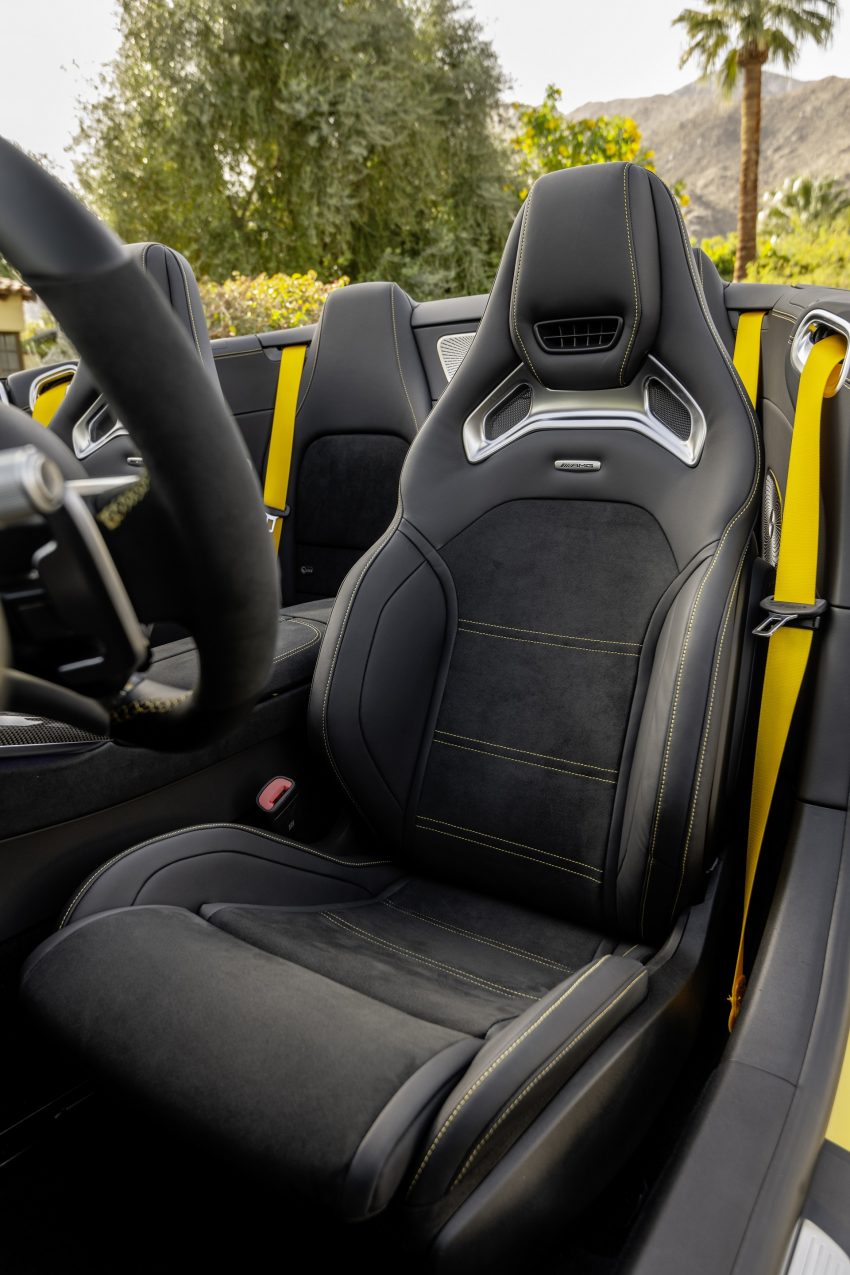
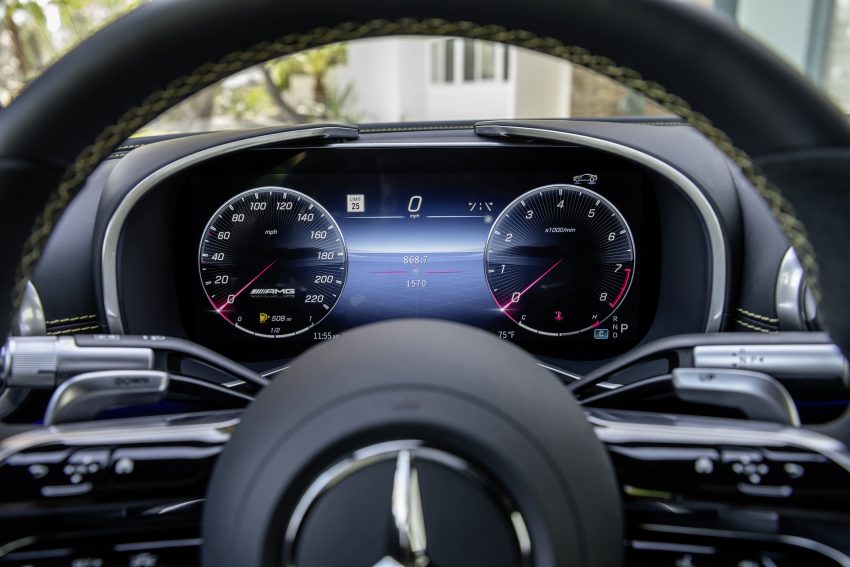
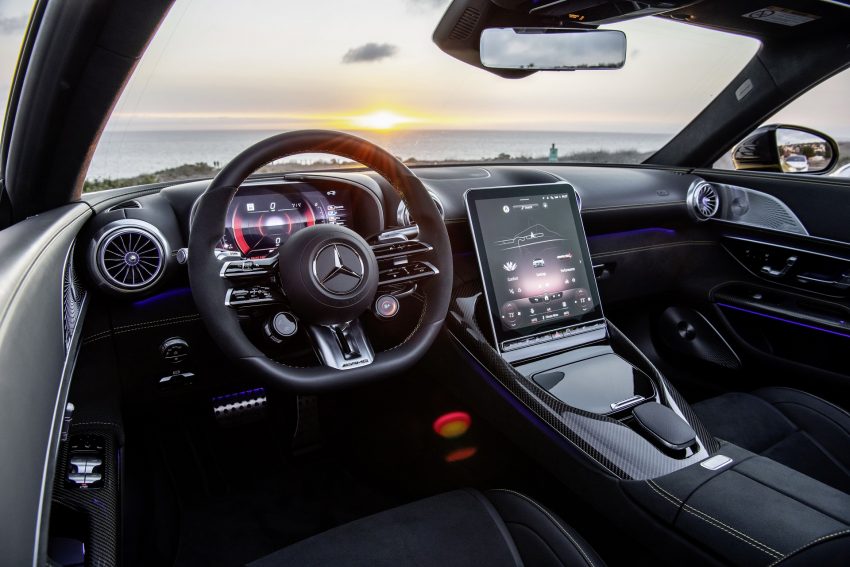
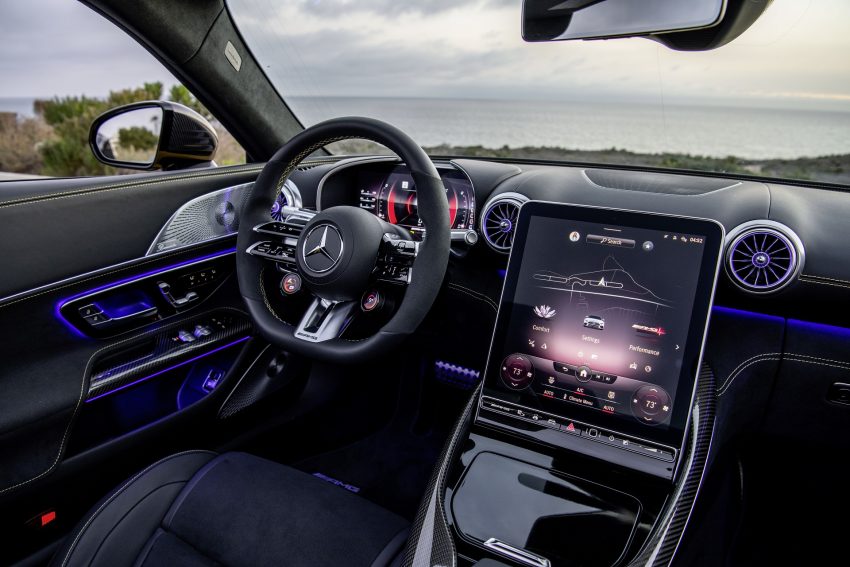
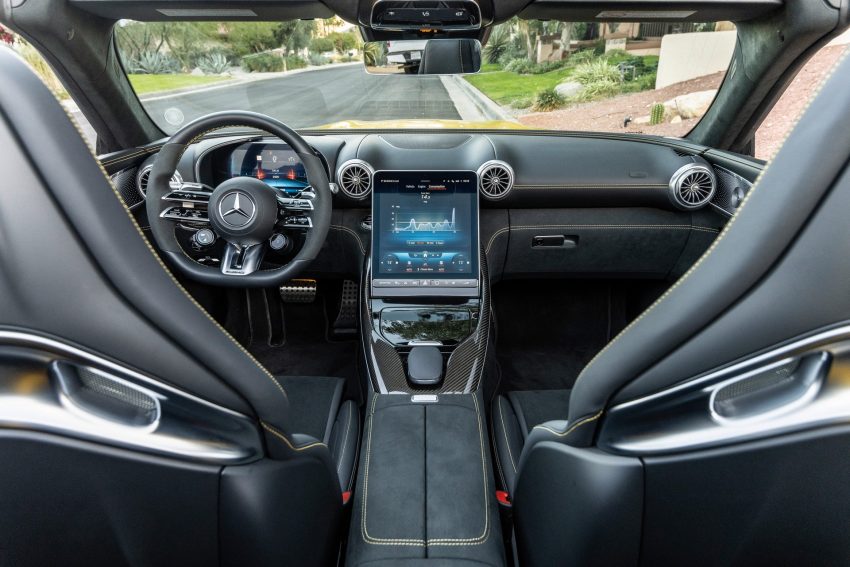
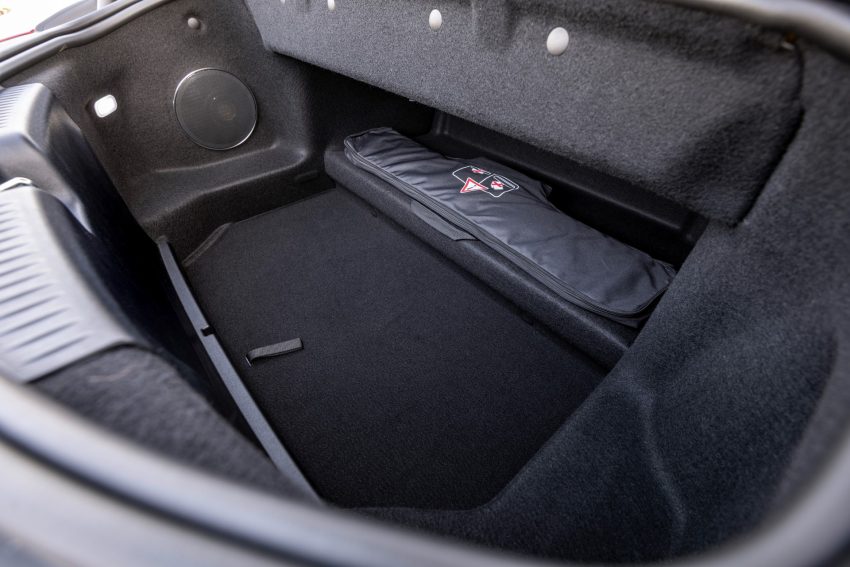
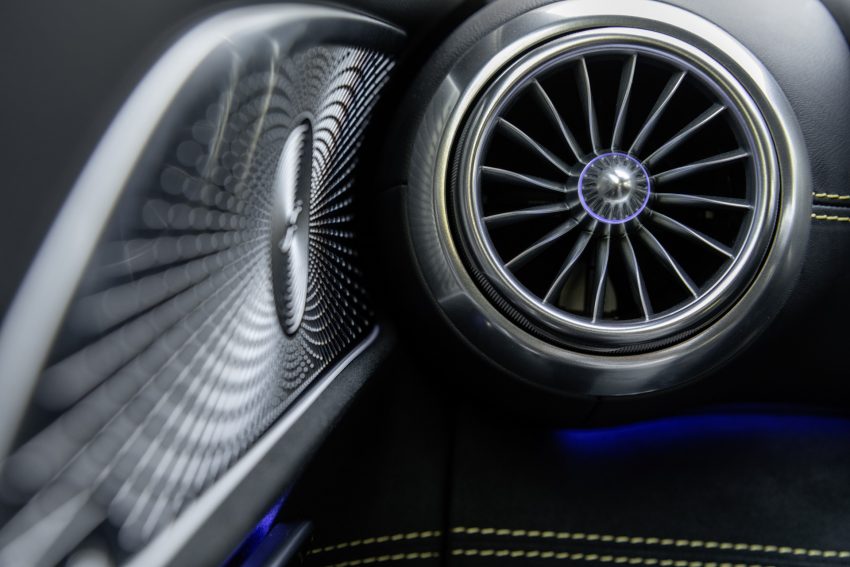
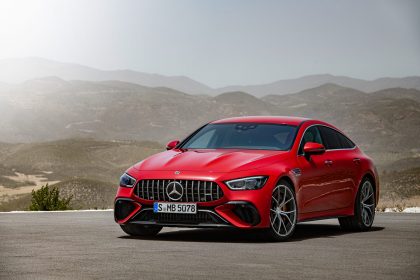
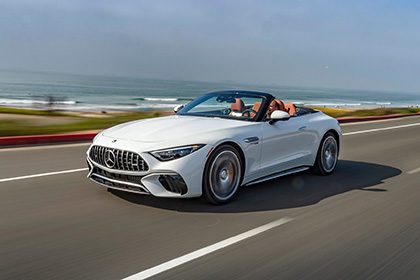
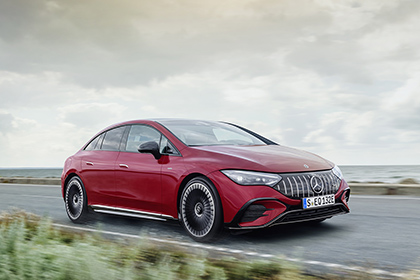
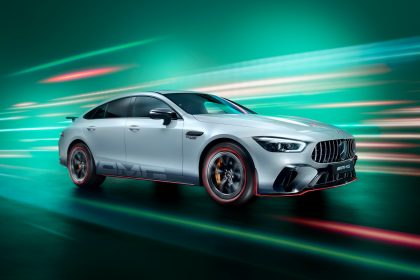
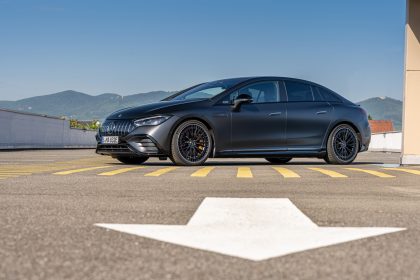
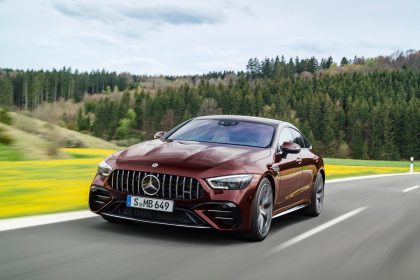
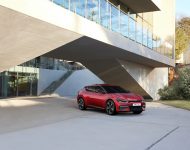
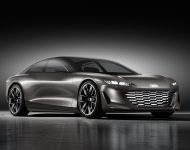
![Download 2020 Honda Civic Type R [UK-spec] HD Wallpapers and Backgrounds](https://www.motortread.com/wp-content/uploads/2021/02/2020-Honda-Civic-Type-R-UK-spec-Front-Three-Quarter-Wallpaper-1-190x150.jpeg)


